Index of Contents
- Introduction
- Google Map of Temple Locations and Kerala District Map
- Palakkad Parashurama Shiva and Bhagavathy Temples
- Sri Anjumoorthy Temple, PRST56
- Thrippalur Maha Shiva Temple, PRST54
- KILLIKKURUSSI MAHADEVA TEMPLE, PRST58
- Kaipayil Sree Mahadeva Kshethram, PRST50
- Thiruvalathur Randumoorthi Temple, PSBT86
- SRI KALYANA SUBRAMANYA SWAMY TEMPLE,Kodumbu PRST57
- Panaiyoor – Paloor Siva Temple PRST51
- Pokkunni Shiva Temple, PRST53
- Thrithala Siva Temple, PRST55
- Thiruvitthuvakodu – Uyyavantha Perumal Temple, DD77,PRST52
- Narasimha Murti Temple, Nhangattiri,PSRT52
- Sree Nhangattiri Bhagavathy Temple PSBT 64
- Sri Kannanur Bagavathi Temple PSBT 32
- Chenganamkunnu Bhagavathy Temple, Ongallur , PSBT13
- Cherpulassery Ayyapan Kavu, PSDT 35
- Other Shiva Temples
- Ayalur Shiva Temple,Nemmara
- Vettakarumakan Temple, Nemmara
- Thripallavoor Shiva Temple, Palakkad
- Visalakshi Sametha Sree Viswanathaswamy Temple, Kalpathy
- Ongallur Maha Thali Temple
- Kaithali Shiva Temple, Pattambi
- Perumudiyoor Shiva Temple
- Kunnakkattu Mahadeva Temple, Pattambi
- Anthimahakalan Kavu, Kulappully
- Shiva Kshetram, Temple Shoranur
- Chuduvalathur Siva temple, Shornur
- Other Bhagavathy Temples
- Nenmara Sri Nellikulangara Bhagavathi Temple
- Mangottu Kavu Temple, Athipotta
- Sri Chinakathoor bhagavathi Temple,Palapuram
- Sree Puthanalkkal Bhagavathi Temple,Cherpulassery
- Sree Pariyanampatta Bhagavathi Temple
- Ootukulangara Bhagavathy Temple,Peruvemba
- Sree Emoor Bhagavathy Temple
- Puthur Thirupuraikkal Bhagavathy Temple, Palakkad
- Sree Kurumba Bagavathi Temple, Vadakkanthara
- Bhagavathy Temple, Manapullikavu, Palakkad
- Vadakanthara Thirupuraikkal Bhagavathi Temple
- Kadapparambathu Kavu Bhagavathy Temple,Ongallur
- Mulayankavu Bhagavathy Temple, Palakkad
- Kodikkunnu Bhagavathy Temple,Parudur
- Muthassiar Kaavu, Kodumunda
- Mahavishnu Temples
- Other Temples
NOTE Since the Blog is lengthy, If you Click on any Title, you will be taken to the concerned paragragh by the link provided. Also you can return to the Index of Contents for which links have been provided at several places in the Blog.
1. Introduction
This blog gives the details of Kerala temples I had darshan from Thirunelli to Ambalapuzha to Palakkad . Since there are more than 150 temples with the tour cris-crossing 11 districts of Kerala, The blog has been organized district wise.. A large number of temples have been covered in tours undertaken in 2009, July 2019, and Nov 2019 and details of the tour given in my earlier Blogs. For completeness sake, the reference to these temples in the various districts have been cross – referred. The blog has 5 parts. In Part 1, Details of the Program implemented is given with Wayanad District temples and Kannur District Temples had darshan. In Part 2, details of Malappuram District Temples and Alappuzha District temples had darshan are given. In this part details of Palakkad District Temples had darshan are given. In Part 4 details of Thrissur District Temples had darshan are given. In Part 5, details of Kozhikode district, temples, Ernakulam District Temples ,Kottayam District Temples, Pathanamthitta District Temples and Idukki district temples had darshan are given
It may be kindly noted that I have given the details of temples I had darshan / planned. There are still a very large number of temples left out which I didn’t have darshan.
Since the Blog is quite lengthy, for ease of navigation across the Blog, a Table of Conteants is given in the Index with hyperlinks. By clicking on the link, one can skip to the desired Title Block. At regular intervals, one can reach back to Index as well by clicking the hyper links given to Return.
Categories of Kerala Temples : I have categorized the temples as : Parasurama Shiva Temples(PRST), Parasurama Bhagavathy Temples (PSBT), Divya Desams of Maha Vishnu, Other Shiva, Bhagavathy and Subhramanya temples. Please see my blog on Parasurama Temples which gives a map of Parasurama Kshetrams and temples in India with details of some of them.
2 Google Map of Temple Locations and Kerala District Map
The locations of Kerala temples are embedded in the Interactive Google Map in the post. By clicking any pointer in the map, one can see photographs , weblinks for details and you tube links for video of the temple.
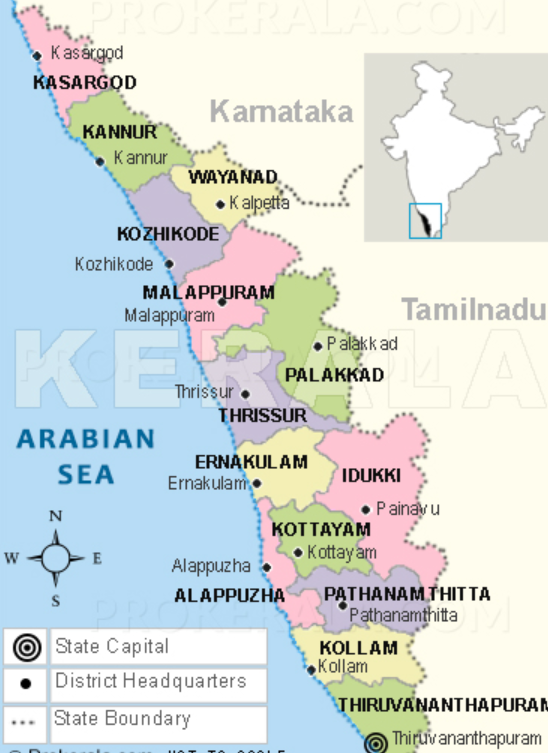
3 Palakkad Parashurama Shiva and Bhagavathy Temples
Parasurama Kshetrams
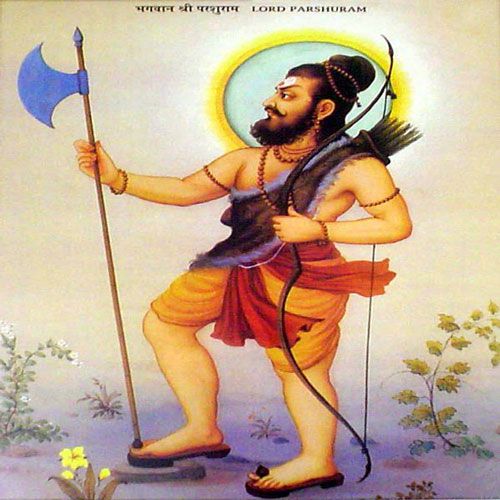
As per the legend, Lord Parasurama created the land between Gokarna and Kanyakumari. Lord Parasurama the sixth incarnation of Lord Vishnu was the son of Sage Jamadagni and Renuka. As a mark of repentance for Kshatriya Nigraha sin, Parasurama meditated at Gokarna and invoked Lord Varuna (the Lord of the Oceans). Parasurama asked him for a boon. To absolve himself of the sins he had committed, he wanted to donate some land to the Brahmins. There was no land available because he already donated the whole land he obtained by the 21 round Kshatriya Nigraha to Sage Kashyapa. Lord Varuna told Parasurama that he would give him as much land as he wished. He told him to fling his Parasu (axe) from where he stood at Gokarna. The land from Gokarna till the point where the axe landed would be given to him was the boon that Lord Varuna promised him. The throw of the `axe’ from Gokarna to Kanyakumari created Kerala. Parasurama donated this land to the Brahmins and settled Brahmins there in 64 gramams or villages. After the creation of these gramams, Parasurama had consecrated 108 Shiva temples and 108 Durga temples for the well-being and prosperity of the people in Kerala . Please see my blog on Parashurama Kshetras for more details. Details of some more Parashurama established Shiva and Bhagavathy templ,es are given in my blogs: Details of some more of the Parashurama Shiva and Bhagavathy Temples are given in My Blogs: Kerala Temples II , Kerala Temples III – part1 of 2 To Return to Index of Contents, Click Here. Otherwise Continue
3.1 Sri Anjumoorthy Temple, PRST56
Sri Anjumoorthy Temple, JG93+42F, Anjumoorthy, Kerala 678682 PRST56
(Anjumoorthy Managalam Temple) Sri Anjumoorthy Temple located at Anjumoorthy, Kerala at a distance of 36 kms from Thrissur and 35 kms from Palakkad is a Parashurama Siva Temple PRST56. Sri Parashurama is the sixth Avatar of Lord Vishnu and He established 108 Shiva Temples, 108 Bhagavathy temples and 108 Dharma Sastha temples in Kerala . The name of this temple should have been :Anjumoorthy Mangalam Sree Mahadeva Kshehtram.

As per the legend, Anjumoorthy Temple was built by Bhoothathan in overnight at Mangalam Village. The name Anjumoorthy Temple because five main deities are worshipped in the shrine : Sudarshna Chakra, Mahadeva, Mahavishnu, Bhagavathy and Ganapathy are worshiped here. Apart from this, there are another six upa devatas in the temple.. Sudharshana Chakra, the main Prathista in this temple, is believed to be Swayambhu (self manifested) but that which appeared due to divine intervention It is considered to be the only temple in India where Sudarshana Chakra, a sharp spinning wheel carried by Lord Vishnu, is the primary deity.
Sage Kashyapa was on his way to install the murti of Vishnu in a place not far from the present Anjumoorthy Temple. When he reached the present Anjumoorthy Temple, he happened to see a pond and realized the presence of Vaishnava Durga. He saw a murti of dancing Durga on the banks of the pond and installed it in the present Anjumoorthy Temple. This murti can be seen today behind the main sanctum sanctorum.
Sage Kashyapa was late for the installation ceremony of the murti of Vishnu in the nearby temple. Vishnu became angry and let out his Sudarshana Chakra. The Sudarshana appeared before Sage Kashyapa and the murti of dancing Durga in the present Anjumoorthy Temple. Sage Kashyapa prayed to the Sudarshana and installed it in the temple in front of Anjumoorthy Temple.

The Sreekovil is on the northern side. In the southern side, there is Vishnu. Sudarsana murthy is also there.
The temple timings are : Morning Darshan Time – 5:30 AM to 9:30 AM; Evening Darshan Time – 5:30 PM to 7:30 PM. The temple festival is observed in Makaram Month. The arattu or the conclusion of the temple festival is on the Rohini Nakshatra day in Makaram month.
3.2 Thrippalur Maha Shiva Temple, PRST54
Thrippalur Maha Shiva Temple, Pullode, Kerala 678542 PRST54 Thrippalur Siva Temple located on the banks of the Gayatri river at Alathur of Palakkad District in Kerala is a Parashurama Siva Temple PRST54 . Sri Parashurama is the sixth Avatar of Lord Vishnu and He established 108 Shiva Temples, 108 Bhagavathy temples and 108 Dharma Sastha temples in Kerala,
Identical to the three famous and important Shiva temples of Central Kerala, which are Vaikom, Kaduthuruthi and Ettumanoor, there are three temples in Central Kerala also, which are Pallavur, Ayalur and Tripallur. The similarities and importance are due to multiple factors i.e., the installation of the Lingas, the method of worship and the uniqueness of combining the worship in these three temples on the same day.The legend covering these temples are also similar.

It is believed that the Siva Lingam in this temple was installed by Demon Kara. Giant Kara got three shiva lingams, after his prolonged Thapas, and he carried these Lingams one in his right hand, second in left hand and third one on the teeth. He installed the right hand Lingam at Ayalur, Left hand Lingam in Trippalore through his feet and the third one in Pallavur. All these temples are situated within five kilometers.
The temple is dedicated to Lord Narasimha and Lord Krishna in addition to Lord Shiva. it was once under the control of the Kavalappara Swarupam of Palakkad King.
The temple complex having three main sreekovil for Lord Shiva, Lord Krishna and Lord Narasimha. The two-storey intricate carvings on the shrine of Lord Shiva reflect its antiquity. The Sanctum Sanctorum of Lord Shiva and Lord Krishna are in square shape. The shrine of Lord Krishna has two storeys and the Narasimha is circular (rounda-sanctum). All the three idol of the goddesses facing west. The interior of the temple is covered with polished granite stones. The well-packed small space gives its atmosphere an antique feel. On the east side of the temple, there is a kind of old paintings on the wall that appear to have been built by a devotee of Trippalur Shiva on closer inspection. It believe that these painting are a century old. The temple has a large pond outside the western temple gate. It is believed that the temple was built to calm the power of Lord Shiva.

The temple has sub-deities of Ganapathi, Subramanya, Ayyappa and Nagas. The tantra of the temple is with Andaladi and Kaimukku. Deepavali Vaavu is the main festival in this temple. It is believed that is was once under the control of Palakkad Kings. The temple has a large pond outside the Western gate. It is believed to be made to calm down the power of Lord Siva in this temple. A similar concept was found in Thiruvaloor temple as well. Deepavali Vavu is the main festival of Thrippalur Mahadeva temple
3.3 KILLIKKURUSSI MAHADEVA TEMPLE,PRST58
KILLIKKURUSSI MAHADEVA TEMPLE, Killikkurussi mangalam, Lakkidi, Kerala 679301 PRST58 KILLIKKURUSSI MAHADEVA TEMPLE located at Killikkurussi mangalam, Lakkidi, Kerala at a distance of 4 kms from Thiruvilwamala and 30 kms from Palakkad is a Parashurama Siva Temple PRST 58 . Sri Parashurama is the sixth Avatar of Lord Vishnu and He established 108 Shiva Temples, 108 Bhagavathy temples and 108 Dharma Sastha temples in Kerala.This Lord Shiva temple captures the attention of all with its unique architectural exquisiteness, carved carefully in wood.

The main deity worshipped in the temple is Shiva and the darshan is towards west. The Nandi in the temple is slanting towards northeast side.
It is believed that the Shivling worshipped in the main sreekovil (sanctum sanctorum) was installed by Shuka Maharishi.A Ganapathi murti is worshipped on the left corner of the sanctum sanctorum. The Upa Devatas worshipped in the temple are Goddess Parvati, Guruvayurappan, Vanadurga and Nagam.
There is no festival or cultural programs as it is believed that Shiva is performing Tapas in the temple.Panchagavya kalam is held from Thulam 1 to Thulam 13.There is a belief that a dumb person will be able to talk after eating the Kadalipazham (nedicha kadalipazham) offered in the temple.The temple belongs to Pazheydathu, Mangalathu, Killikurissi, Poonthottathu, Panavur and Mantredathu Illams.The temple was renovated by Veera Keralan, a king of Cochin. There is a Sanskrit shloka regarding this renovation in the Balikallu of the temple. Kunjan Nambiar has mentioned Killikurissimangalam Shiva in many of his literary works.

The village is the birthplace of famous Malayalam satire poet and founder of the Ottamthullal art form, Kunchan Nambiar (Rama panivada).The house where Kunchan Nambiar was born, Kalakkathu Bhavanam, is now a cultural centre, undertaken by Department of Culture of Kerala State Government. There is also a library situated there in memory of Kunchan Nambiar called Kunchan Smaraka Vayanasala – Kunchan Memorial Library
3.4 Kaipayil Sree Mahadeva Kshethram, Pathirippala, PRST50
Kaipayil Sree Mahadeva Kshethram, Temple Rd, Pathirippala, Kerala 679302 PRST50 Kaipayil Sree Mahadeva Kshethram located at Pathirippala, Kerala at a distance of 24 kms from Palakkad is a Parashurama Siva Temple PRST50 . Sri Parashurama is the sixth Avatar of Lord Vishnu and He established 108 Shiva Temples, 108 Bhagavathy temples and 108 Dharma Sastha temples in Kerala
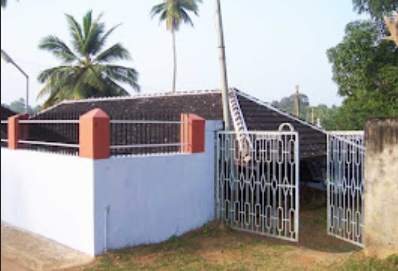
The temple is very small but is situated amidst land of 3 acres which includes a big pond. Here Lord Shiva is Swayambu (self manifested) Ganapathy & Bhagavathi are the other deities in this temple. Here, the daily poojas are offered by Tamil Brahmins though the main Tantri is a Namboodiri. Main festivals are Sivarathri, Ardradarsanam & Thalappoli. Here, the Swayamboo lingam is facing east.
3.5 Thiruvalathur Randumoorthi Temple, PSBT86

Thiruvalathur Randumoorthi Temple, Palakkad – Chitoor Road, Near Althara Junction Bus Stop, Kodumbu, Palakkad, Kerala 678551 PSBT86 Thiruvalathur Randumoorthi Temple located at Kodumbu, Palakkad district, Kerala at a distance of 9 kms from Palakkad is a Parashurama Bhagavathy Temple PSBT86 . Sri Parashurama is the sixth Avatar of Lord Vishnu and He established 108 Shiva Temples, 108 Bhagavathy temples and 108 Dharma Sastha temples in Kerala
Thiruvalathur sree Randumoorthi Temple is very huge and nice. This is the biggest and oldest temple in Palakkad district and also one amongst the most famous 108 ‘Durgalayas’ consecrated by Lord Parasurama.
The temple allures tourists and pilgrims alike with its striking architecture and structural beauty. There are two presiding deities – Annapoorneswari and Mahishasura Mardini (two different forms of the Mother Goddess). Situated on the banks of the Sokanasini at Thiruvalathur in Palakkad, the temple has a beautiful Koothambalam (traditional temple theatre) and a huge Mizhavu (a percussion instrument).
The temple is protected by huge stone walls. There are four entrances to the temple though the two main entrances face east and west. Both temples have roofs clad with copper sheathing. While Annapurneswari temple is at a lower level, the other temple is at a higher level.

The temple celebrates its annual ten-day festival which ends on the Karthika asterism in the Malayalam month of Vrischikam (November-December). The major attraction of the festival is the lighting of Chuttuvilakku (stone lamps) surrounding the temple.
The temple’s Koothambalam (traditional temple theatre) and a huge Mizhavu (a percussion instrument) inside it are the major attractions in the temple. During the festival season performance of various art forms are presented in the Koothambalam.
The temple is open from 5:30 AM to 10:00 AM and from 5:00 PM to 8:00 PM.
3.6 SRI KALYANA SUBRAMANYA SWAMY TEMPLE, Palakkad, PRST57
SRI KALYANA SUBRAMANYA SWAMY TEMPLE, PMRX+H42, Palakkad, Kerala 678551 PRST57 (Kodumbu Subramanya Swamy Temple) SRI KALYANA SUBRAMANYA SWAMY TEMPLE located at Kodumbu in the valley of the Soka Nasini river, Palakkad district Kerala at a distance of 8 kms from Palakkad is one of the 1000 Subhramanya temples in India. It is also is a Parashurama Siva Temple PRST57 . Sri Parashurama is the sixth Avatar of Lord Vishnu and He established 108 Shiva Temples, 108 Bhagavathy temples and 108 Dharma Sastha temples in Kerala .It is one of the oldest Murugan temple in Kerala region. In Thirupugazh Arunagiri nadhar sys that “KOdumbu” is half of Pazhani..Devotees believe that if a devotee takes bath in the Soka Nasini river, all his sorrows would fly away.
Kodumbu Mahadevar Temple is now known as Sree Kalyana Subramanya Swamy Temple. The main deity in this temple is is Subrahmanya Swamy. Lord Siva is in the Sivalinga form on the north side. It is also famously known as Kerala Palani. For the Arattu (Snanam) of Siva, all the devas are taken in procession.
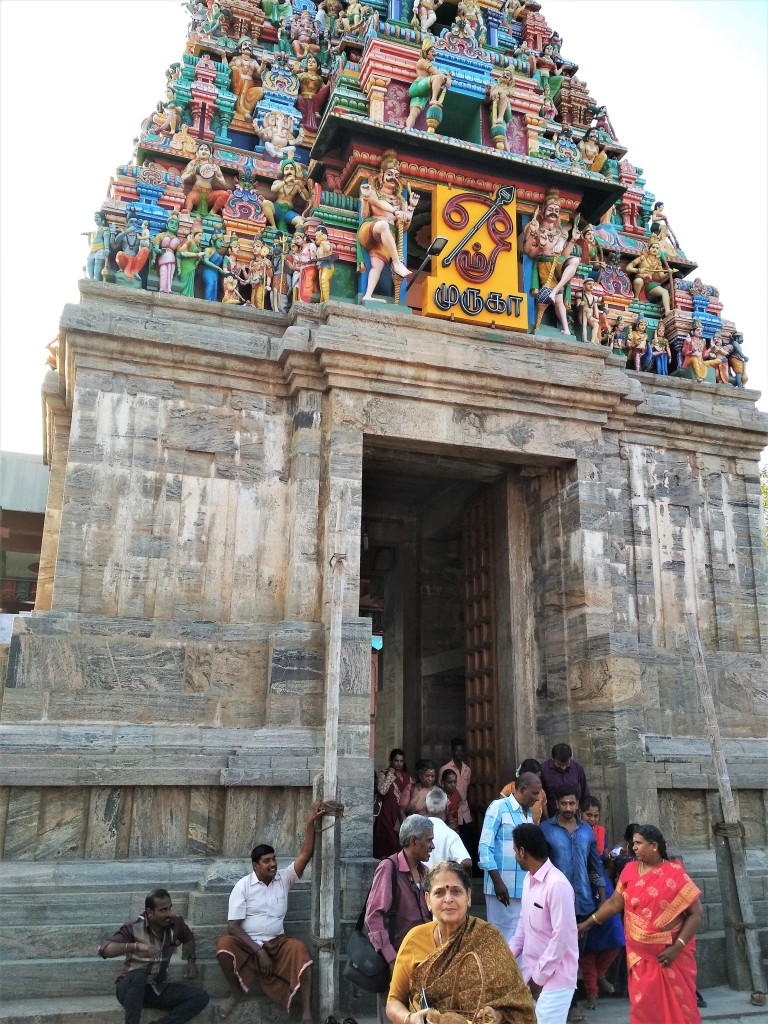
The tower, chariots and chambers of the temple are constructed as per Dravidan style. In the sanctum sanctorum of the temple, Subramanya Swami, standing with his two wives Valli and Deivanai. The complex of the temple is also dedicated to Lord Shiva, Umadevi, Lord Parasurama, Lord Krishna, Shasta, Bhairavas. This temple also have statue of Senguntha Navaveerargal and Veerabahu who’s were the ancestors of Senguntha Kaikolar.The Sthala Vruksha of the temple is a Champaka tree,
As per legend, a group of Tamil merchants belonging to the SEngutha mudaliyar caste were regularly coming to do business in Kerala and settled down in Kodumbu. They used to go to Avinasi town to sell cloths, Once when they were going , they head voice from the bush near Kozhi mampatti village telling them , “I also will come’.. I also will come.” Though they tried their best to locate the source of that voice, they were not able to. During the bext trip same thing happened. They searched thoroughly , they found a Subramanya statue along with Valli and Devayanai inditch. That Statue told them, “I want to come with you and I would protect all of you.”
They took the idol with reverence and kept it on the cloth bundle on the back of a bullock. Suddenly the bullock disappeared .Though they searched they could not find it but when they reached their homes. They found the bullock carrying the statue.. They started worshipping the god. After several years they wanted to build a temple for that god., The local administrator at that time was one Kurror Mana Nambuthiripad.He allotted them a place inside the shiva temple to build their temple.The temple was built . The poojari I of shiva temple during those days was one Achuthan Namboodiri. He insisted that the pooja should be performed according to the Agama followed in Kerala and the Mudaliars were not prepared for it .
The kurror Mana Nambudiripad asked the Malayali side as well as Tamil side to keep a Kumbha at the northern gate of the tewmple and asked the Nambudiris to lift the pot kep by the Tamil side .They were not able to. A decendant of Manikka Vachakar the great Saivite saint who represented the Mudaliars easily lifted the pot kept by Nambudiris. So it was decided that the pooja in Subramanya temple would be according to Tamil Agama and that of the Shiva temple following the Kerala Agama. This is being followed to day.
Soorasamharam and Thaipooyam are the main festivities of the temple. Soorasamharam is an annual festival celebrated in the Malayalam month of Thulam (October-November), which begins on the day of the new moon and ends on the day of Skanda Sashti. According to Skanda Puranam, Lord Muruga killed Soorapadman the demon with his Vel (lance) and this divine act is known as Soorasamharam, to celebrate the devout conduct of the Lord’s victory in this festival. The ritual battle between Lord Subrahmanian and the demons begins in the afternoon and lasts three hours. The devotees carry huge effigies of the demons Aana Mahaa Sooran, Singa Mughan, Banu Gopan and Soora Padman. The idols of Lord Veera Baahu and Lord Bala Subrahmanian and Lord Kalyana Subrahmanian are transported in separate chariots.
The temple timings :5,30 Am to 12 noon and from 4.30 Pm to 8Pm There are special poojas conducted at the temple during Pradosham, Karthika , Sashti and Thiruonam. The Brahothsavam of the temple is conducted during Thai Poosam.
3.7 Panaiyoor – Paloor Siva Temple PRST51
Palathully Paloor Siva Temple, Kodumbu Oolassery Rd, Kerala 678531 Panaiyoor – Paloor Siva Temple PRST51 Palathully Paloor Siva Temple located at Kodumbu Kerala at a distance of 13 kms from Palakkad is a Parashurama Siva Temple PRST51 . Sri Parashurama is the sixth Avatar of Lord Vishnu and He established 108 Shiva Temples, 108 Bhagavathy temples and 108 Dharma Sastha temples in Kerala

Panaiyoor Siva Temple is located in the village of Vaniyamkulam in Palakkad District, Kerala. The main deity in this temple is Lord Shiva, located in the main Sanctum Sanctorum, facing east. According to folklore, Sage Parashurama set up the idol. It is one of the 108 temples of Shiva of Kerala. The temple is located about 4 km from Vaniyamkulam village on Vaniyamkulam Road – Vallappuzha Road. The sanctuary’s main sanctuary is square in the Kukkudakruthi style.
Palathully Paloor Siva Temple is situated on a scenic Bharatapuzha riverside and is a nice, calm & serene temple.
3.8 Pokkunni Shiva Temple, PRST53
Pokkunni Shiva Temple, Palakkad, Kerala 678504 PRST53 Pokkunni Shiva Temple located at Vadavannur, Kerala at a distance of 22kms from Palakkad is a Parashurama Siva Temple PRST53. Sri Parashurama is the sixth Avatar of Lord Vishnu and He established 108 Shiva Temples, 108 Bhagavathy temples and 108 Dharma Sastha temples in Kerala The temple was built by the King of Kollamkodu kingdom.
There is a pond of 1 1/2 acres Inside Pokkuni Mahadeva Temple. It is sorrounded by rich paddy fields .Siva is swayamboo (self manifested) and to reduce His Rowdra bhava, placed inside water.

As per legend, Sei Parasurama installed Shiva Linga at the pond (Perumkulam) in Alathur as a way to diminish the harshness of the great deity and bring him peace. In other temples, the deity is worshiped facing to a pond or other pool to reduce the temper of Lord Shiva. One side of the temple pond may have been erected to reach the temple which was formerly the temple pond. One can see the temple standing in the pond.
The villagers say that a Brahmin lady Lakshmi Ammal along with her husband Venkitanarayanaiyer went to Kasi around and brought four Banalingams and installed in Kollengode Pudugramam Koduvayur Sivan temple Kalpathi sivan temple and Pokkunni siva temple. The then Alangudi thampurans from pudugramam along with the help of the the Raja of Kollengode constructed this beautiful temple. There is a Alangudi Badrakali temple nearby. The temple tank never dries up nor overflows. Worshipping here will give santhanabhagyam and doing ayush homam will will cure all deseases. The Lord is Mrithunjaya.

This temple was once owned by the king of Kollengode . The old name of Kollengode was Venganad. Venganad Nambi or the king of Kollengode was the ruler of Venganad comprising the five lands. He was also the leader of over a thousand Nair families in the area. Goddess Kachamkurichi was the Goddess of the king of Kollengode. But Vadavannoor Thevar (Pokkunny Siva) was a favorite god.
Other deities in the temple are Lord Ganapathy and Naga. Three poojas are conducted in the temple: Usha pooja, Ucha pooja and Athazha pooja. Important offerings are Rudrabhishekam and Pushpanjali
3.9 Thrithala Siva Temple,PRST55

Thrithala Siva Temple,Thrithala, Kerala 679534 PRST55 Details of the temple can be seen in my Blog : Must Visit Kerala Temples III – Temples around Shoranur and Pattambi – Part 1 of 2
3.10 Thiruvitthuvakodu Uyyavantha Perumal Temple,DD77, PRST 52
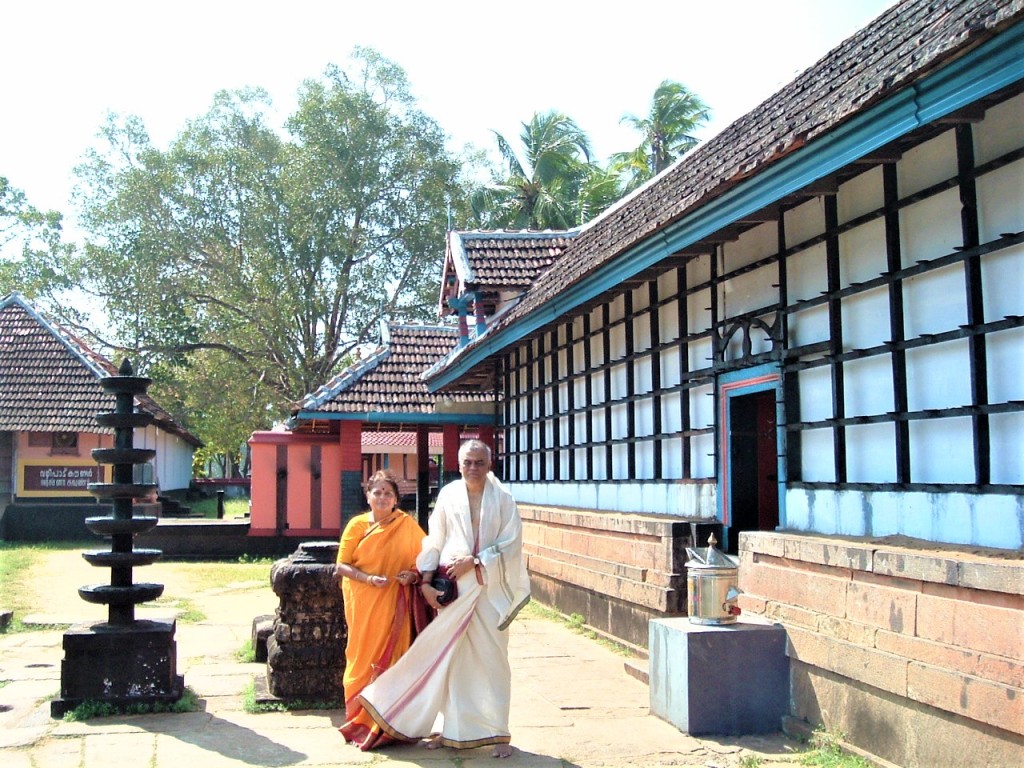
Thiruvitthuvakodu – Uyyavantha Perumal Temple,Thirumittacode, Kerala 679533 DD77, PRST 52 Details of the temple can be seen in my Blog : Must Visit Kerala Temples III – Temples around Shoranur and Pattambi – Part 1 of 2 To Return to Index of Contents, Click Here. Otherwise Continue
3.11 Narasimha Murti Temple, Nhangattiri, PSRT52
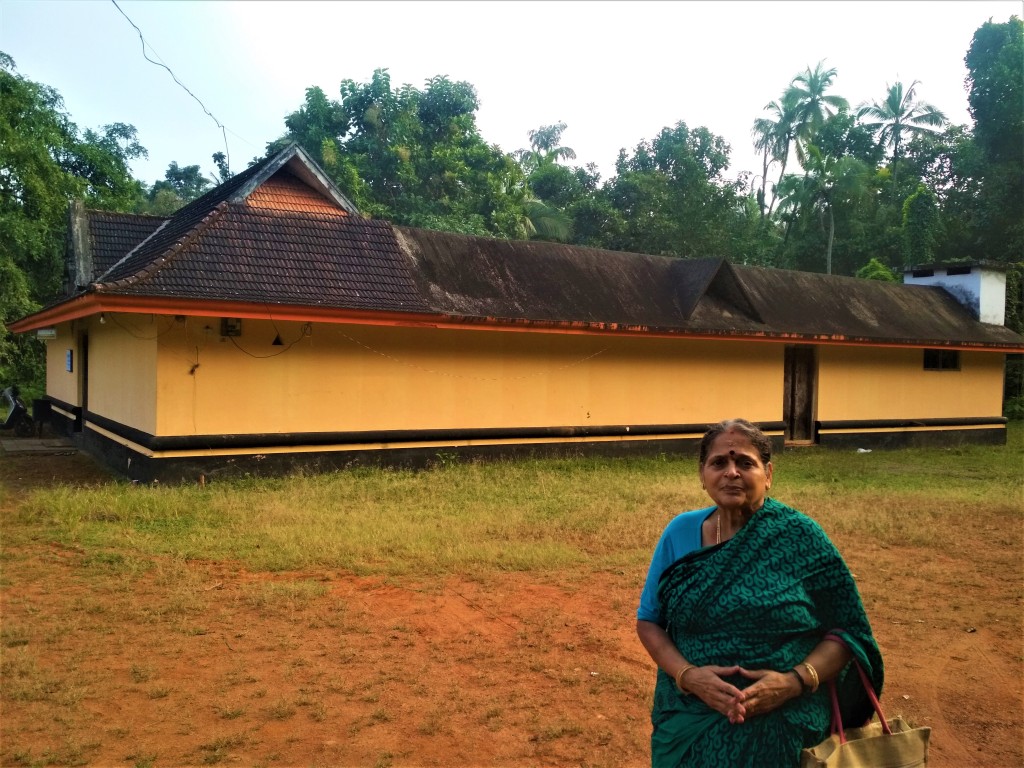
Narasimha Murti Temple, Nhangattiri, Kerala 679303 PSRT52 Details of the temple can be seen in my Blog : Must Visit Kerala Temples III – Temples around Shoranur and Pattambi – Part 1 of 2
3.12 Sree Nhangattiri Bhagavathy Temple.palakkad , PSBT 64

Sree Nhangattiri Bhagavathy Temple.palakkad ,Nhangattiri, Kerala 679514 PSBT 64 Details of the temple can be seen in my Blog : Must Visit Kerala Temples III – Temples around Shoranur and Pattambi – Part 1 of 2
3.13 Sri Kannanur Bagavathi Temple, PSBT 32

Sri Kannanur Bagavathi Temple, Palakkad – Ponnani Rd, Kannannoor, Ullanoor, Kerala 679534 PSBT 32 Details of the temple can be seen in my Blog : Must Visit Kerala Temples III – Temples around Shoranur and Pattambi – Part 1 of 2
3.14 Chenganamkunnu Bhagavathy Temple, PSBT13

Chenganamkunnu Bhagavathy Temple, Ongallur -II, Kerala 679313 PSBT13 Details of the temple can be seen in my Blog : Must Visit Kerala Temples III – Temples around Shoranur and Pattambi – Part 1 of 2
3.15 Cherpulassery Ayyapan Kavu
Cherpulassery Ayyapan Kavu, Pattambi Cherplasseri Road, Cherpulassery, Kerala 679503 PSDT 35 Cherpulassery Ayyapan Kavu located at Cherpulassery, Kerala at a distance of 44 kms from Palakkad and 26 kms from Thiruvilwamala is a Parashurama Dharma Shastha Temple PSDT 35. Sri Parashurama is the sixth Avatar of Lord Vishnu and He established 108 Shiva Temples, 108 Bhagavathy temples and 108 Dharma Sastha temples in Kerala.
Cherpulassery Sri AyyappanKavu is also known as Women’s Sabarimala, Malabar’s Sabarimala, Valluvanad’s Sabarimala, etc, is the holy haven where Shree Dharmashastha is present with his consort Prabhadevi and son Satyka.This temple is one of the 108 Shastha temples which has a history of more than 1200 years .Lord Ayyappan is the presiding deity. The outer sanctum also has shrines dedicated to Navagrahas (nine planets), Nagaraja (serpent god), Brahma Rakshas, Krishna, Ganapathi and Shiva. The idols of both Shiva and Ganapathi are installed in one shrine.

It was known that more than 10 Namboothiri families lived in this vicinity. One among them started a penance at the Thiruvullakkavu Shastha temple in Peruvanam village, Thrissur with a wish of fathering a son.Afer years of penance and hardships he became weak and decided to return home. The next day was his birthday. Early next morning he noticed a stone in he form of a quadrangle which was not there before. Being a pious and faithful worshipper, he could easily make out that this was nothing but the devine form of Shastha. He prepared and offered a rice cake (known as Ada) with the rice and jaggery he had with him.Rice and jaggery cake is accepted as the most favorite offering to Dharma Shastha even today. .
By the graceful blessing of lord Shastha, a baby boy was born to them. But since that boy wanted to become an ideal mendicant he even forgot to get married when he grew up. Gradually the sole member of the family also passed away without a heir. Later, by the tireless efforts of their manager, Umikkunnathu Nair, the residence was converted to a temple. The jasmin baug in the quadrangle became the sanctum sanctorum and its surrounding roofed structure became the temple kitchen .
The Speciality of the temple: 1) After practising veda, vedantha and upanishads Sree Dharma Shastha ascended the ultimate throne of wisdom, hence today Cherpullasery Ayyappa Temple is an important center for the initiation of literacy. This temple is one of the very few temples where Ayyappa is being worshipped with fire and ballads.

2) Worshipping Sree Sharma Shastha as a complete man is the most ideal, hence pregnant women in their 7th mont of pregnancy visit the temple and pray for a comfortable delivery and intelligent baby. The offering is found very popular and effective .
3) Another specialty of this temple is that it is one of the few temples in Kerala where marriages can be solemnized in front of Ayyappa. Since Ayyappan is a celibate (Nitya Brahmachari) marriages are not normally solemnized at his temples, but the Cherpulassery Ayyappan Kavu is an exception to this practice
Offerings in the temple are :1) For full-filling devotee’s wishes “Theeyattu” is very famous ritual which is done here . If someone have any wishes he can offer Theeyattu for Shasthavu(ayyappan) and its believed that wish will be fulfilled.
2) 101 Nazhi Ari Ada Vazhipadu is also a very famous Offering which is done here for fulfilment of long pending wishes. Offering or vazhipadu is done after fulfilling the wish .
3) Neeranjana lamp and Ada Naivedyam are most important offering. 1st Saturdays of Malayalam calender months is special.
Festivals in the temple are : 1) Event called “Theeyattu” starts on 1st of Vrichikam month of malayalam calendar. It lasts for 40 days.
2) Aarattu is on 10th day of Uthram in Kumbham month. Also used to have Kalam Paattu on these days.
Thousands of people arrive on the day to witness various rituals and festivities. Special poojas are held during the festival days in which thousands of devotees participate. Chendamelam and panchavadyam also form a part of this festival. Parayeduppu and elephant procession provides a visual treat to the devotees.
Traditional performing arts, music and dance are staged during the period. The temple is traditionally decorated with plantain, coconut leaves, flowers, leaves, traditional lamps and lights. To Return to Index of Contents, Click Here. Otherwise Continue
4 Other Shiva Temples
4.1 Ayalur Shiva Temple
Ayalur Shiva Temple,Nemmara Aylur Road, Ayalur, Kerala 678510 Ayalur Siva Temple is located at Ayalur, on the banks of Ayiloor river and at the foot of Ayilamudichi hill, in Nemmara, in Palakkad district of Kerala at a distance of 32 kms from Palakkad and 47 kms from Thrissur.
Identical to the three famous and important Shiva temples of Central Kerala, which are Vaikom, Kaduthuruthi and Ettumanoor, there are three temples in Central Kerala also, which are Pallavur, Ayalur and Tripallur. The similarities and importance are due to multiple factors i.e., the installation of the Lingas, the method of worship and the uniqueness of combining the worship in these three temples on the same day.The legend covering these temples are also similar.

The main deity of this temple is lord Shiva and is called Akhileswaran (The God of all people). This temple is more than 1000 years old. It is believed that the Siva Lingam in this temple was installed by Giant Kara. Giant Kara got three shiva lingams, after his prolonged Thapas, and he carried these Lingams one in his right hand, second in left hand and third one on the teeth. He installed the right hand Lingam at Ayalur, Left hand Lingam in Trippalore through his feet and the third one in Pallavur. All these temples are situated within five kilometers.
The temple was said to be under the ownership of Kodakara Nair. Kulangattu nair was the warrior of this family and they looked after the temple administration. The name of temple then was Akhileshwarapuram. The temple had a lot of Akil,(cup-calyxed white cedar) trees hence the name Akiloor or Ayaloor or Ayiloor. Later for a couple of years the temple was under the ownership of various Namboothiri families and finally came under the rule of Cochin king. Now the temple is under the Cochin devaswon board.
The temple faces east and has three poojas and sheeveli on daily basis. The Shiva pratishta is believed to be Parvathy Samethan, is having presence of goddess Parvathy with him. Another specialty of the temple Is that the pratishta of Nandi, the vehicle of Lord Shiva is situated in the southern direction close to the compound wall facing the east. Godess Pavathy is considered Simhavahini and lamp is lit on the western side of the temple behind Nandikeshan
The upadevathas are Ganapathy, Subrahmanyan and Ayyapan. On the right side of Nandikeshan along the Pradakshina path is located seven Mathru swaroopams namely Brahmnai, Maheswari, Vyshnavi, Kaumari, Indrani, Varahi and Chamundi. . There is a sculpture of Dakshinamoorthi at the southern side of the temple. Nagapratishta is on the South-west corner of the temple, outside the sreekovil.
The aarattu Grama Chaitanya Ratholsavam is conducted on Karuthavaau in the Malayalam month of thulaam. The festival is conducted by Kulangattu Nair nad aarattu is conducted in the Ayiloor river. Near the riveride wher Aarattu festival is conducted ( aarattu kadavu) thers is a banyan tree , a temple and a pratishta of lord Ganesha. Ayiloor ratholsavam or car festival is conducted in Malayalam month of Dhanu (Thiruvathira star). More than 100 people participate in the Pradosham abhishekam and also many offerings are being performed in this temple.

Ratholsavam is celebrated for three days. First day Udayasthamana Pooja is performed to Lord Parthasarathy, second day Udayasthamana Pooja to Lord Akhileswara followed by in the night Makeera Vilakku and third day is Ratholsavam (Thiruvathira) day. Most of the people who left Ayalur used to assemble on this festival day to have dharshan of their Gods (Grama Devathai) and also to meet their old friends. Procession by caprisoned five elephants with Panchari Melam,Pandi Melam, Panchavadhyam, Thayambaka and special programs like Kathakali, Music etc. are important on this day apart from Radham Ezhunnallippu.
On Thiruvathira day, Arudhra Dharisanam is an important one. Poornabhishekam to Lord Akhileswara starts early morning at 3.00 am and concludes at 7.00 am with japam viz. Mahanyasam, Rudram, Chamakam, Suktham etc. Arudhra Dharisanam (Jothi Dharisanam-Maha Deeparadhana) will be around 5.30 a.m. At present this festival is conducting by Ayalur Grama Janam. This festival shows tamil-malayalam culture.
The Krishnan (Partha Sarathy) temple, which was built by the Iyers , more than 100 years back, was built in the same compound as the Siva Temple , to its left . There is an interesting story of exchange of idols that is told even today. It seems the idols for the Nemmara Krishnan temple (Parthasarathy) and Ayalore Krishnan(navaneetha Krishnan) temple were made by the same Sculpture. But there was a mix up while delivering and the Parthasarathy reached Ayalore instead of Navaneetha Krishnan and they decided to install it in their temple. The Pooja for the Krishnan temple is by Kerala Iyers. Navarathri is celebrated in this temple. With great pomp The Lamp around the temple will be lit by iyers from a particular street every day of the Navarathri and the streets also got the name from this practice. Onnam Vilakku Theru (First lamp street) and so on till Eighth Lamp Street. .Unlike distributing Prasadam at the temple , People with prasadam go to each street . It is called as Panku ie share by them
4.2 Vettakarumakan Temple, Nenmara
Vettakarumakan Temple, Nemmara Aylur Road, Nenmara, Kerala 678508 Vettakarumakan Temple is located at Nemmara Kerala at a distance of 28 kms from Palakkad.
Vettakkoru Makan is worshipped in parts of North Kerala and North-Western Tamil Nadu. This deity is alternately referred as Kiratha-Sunu (son of Kirata). Vettakkorumakan is believed to be the son of Lord Shiva by his consort Parvathi, born when he assumed the form of a Kirata (hunter) to deliver a weapon known as Pashupathasthra to Arjuna. The most famous temple of this deity is the Balussery-Kotta Vettakkorumakan temple about 25 km from Calicut. Other prominent temples are at Ramanthali, Nileshwar, Kottakkal, Nilambur, Karaparamba and various places in Kannur district and Kasargod district. He is the family deity of the Rajas of Chirakkal, Nileshwar, Kottakkal, Nilambur Kovilakam, Kalathil Kartha’s, Aluva, Amarambalam Kovilakam and Randu Illam Vargam Nambiars. A special type of firecracker called “Kathina” was his favourite.

Vettakarumakan Temple at Nemmar is small in size – but calm and serene.It has a nice location on the lap of the hills surrounding the Nelliyampathy forest,
The Vela festival of Nenmara and Vallangi villages is famous for its grandeur and rituals. The friendly competition between the villages to outdo each other spices up the entire festival and many a unique sight are on display during this time. The Vela is celebrated after the paddy harvest. One gets to witness some wonderful art forms like Kummatti, Karivela and Andivela during this time period
4.3 Thripallavoor Shiva Temple
Thripallavoor Shiva Temple, Palakkad, Kerala 678688 (Siva Thripallavurappan Temple) Thripallavoor Shiva Temple (Thripallavurappan Temple) is located at Pallavur, Palakkad district, Kerala at a distance of 23 kms from Palakkad.

Identical to the three famous and important Shiva temples of Central Kerala, which are Vaikom, Kaduthuruthi and Ettumanoor, there are three temples in Central Kerala also, which are Pallavur, Ayalur and Tripallur. The similarities and importance are due to multiple factors i.e., the installation of the Lingas, the method of worship and the uniqueness of combining the worship in these three temples on the same day.The legend covering these temples are also similar.
It is believed that the Siva Lingam in this temple was installed by Demon Kara. Giant Kara got three shiva lingams, after his prolonged Thapas, and he carried these Lingams one in his right hand, second in left hand and third one on the teeth. He installed the right hand Lingam at Ayalur, Left hand Lingam in Trippalore through his feet and the third one in Pallavur. All these temples are situated within five kilometers.
4.4 Visalakshi Sametha Viswanathaswamy Temple, Kalpathy, Palakkad
Sree Visalakshi Sametha Sree Viswanathaswamy Temple, Chathapuram, Kalpathy, Palakkad, Kerala 678003 Sree Visalakshi Sametha Sree Viswanathaswamy Temple is located at Chathapuram, Kalpathy, Palakkad, Kerala. Tamil Brahmins of Kerala say that “Kasiyil Pathi Kalpathi” i,e Kalpathy is half of Kasi.Kalpathy agraharam was recently recognised as a heritage village by Archeological survey of India.

The general belief is that one Lakshmi Ammal along with her husband Venkitanarayana iyer of kollengode , who had settled there from Mayiladu Thurai of Tamil Nadu went by foot to Benares(Kasi) during those days and brought Siva Lingas from there . They wanted a temple to Lord Shiva to be built resembling the Mayurnatha swamy temple of Mayavaram on the banks of Cauvery(some say Kasi Viswanatha SWamy temple of Benares) and it seems she gave 1320 gold coins to Prince Sekari Varman of Palakkad royal family to a build a temple and consecrate the Shiva lingam which she has brought.
Iakshmi Ammal also constructed three other temples in nearby Kollengode, Koduvayur and Pokkunni. Naturally she installed lingams brought from Varanasi .
The temple is situated at the bottom of eighteen steps leading from the eastern Gopuram. In the south-west direction of the temple is situated the temple of Sri Lakshminarayana Perumal of Old Kalpathy Village and Prasanna Maha Ganapathy of Chathapuram village, in the east the Kshipraprasada Maha Ganapathi Temple of Pandhrandaam Teruvu and the Manthakara Maha Ganapathi Temple of New Kalpathy village and in the east-west direction Sri Varadaraja Perumal of Govindarajapuram village. In the eastern direction at a distance of a kilometer is located the Chokkanathar temple of Chokkanathapuram village. The Serpent Gods [nagaprathishta] are consecrated beneath the first banyan tree, which is also the “sthala Vriksham”. Pooja is performed for this tree and naga prathishta, treating it as “Vishnu Amsom”.
The flag staff (Kodimaram) is erected in front of the temple. The stone slab describing the land given to the temple etc. is installed behind the flag mast. Close to the stone slab is the Bhadralingam and in front of it the Gnana Nandikeswarar, facing Sri Viswanathaswamy. The eight sides of the prakaram(closed precincts of a temple) inside the Temple belongs to Indra, Agni, Yama, Niruruthi, Varuna, Vayu, Kubera, and Eesanan. The idol of Sri Viswanathaswamy is situated in the direction of Kubera facing east and close to this Sri Visalakshi facing south. In front of Sri Viswanathaswamy, Nandikeswarar appears in three forms. The three forms symbolise Aathmathathwam, Vidyathathwam and Sivathathwam.

The moolavar in this temple is Sri Viswanathaswami and he faces the east and mother Visalakshi faces the south .The palli arai is on the west of mother’s shrine.Opposite the Palli Arai are Nava Grahas along with their consorts.Lord Gangadhara shrine is on souh , Muruga along with Valli and DEvayanai on the east and there are also temples for CHandikeswara and Bhairava, facing south
Since mother Visalakshi faces south devotees believe that by praying to her their longevity can be increased.They perform Kumkumarchana to her and perform Mruthyunjaya Japa in front of her.
The idols of Sri Viswanathaswamy and Sri Visalakshi are attached to the pedestals by Ashtabandhanam, a mixture of eight elements that help fix the idol to the peetham or base. The Viswanathaswamy idol is a Bana Lingam. The Bana lingam extends four carpenter’s angul (inch) higher than the pedestal. The circumference at the level of the pedestal may be about eight angul(inches). The Vishalakshi idol stands twenty four inches above the pedestal up to the top of the crown.
Pooja is conducted four times a day: 5:45AM Usha Pooja, 9:45 AM Uchikala Pooja, 5:45 PM Deeparadhana, and 7:45 PM Ardhajama Pooja. Chariot Festivals are not normally carried out in Kerala but Kalpathy temple has a very famous chariot festival. The annual ten-day chariot festival conducted here during the month of November iDuring this time, 4+chariots (rathas) from 4 temples of Kalpathy come together and circumvent streets of the villages in a grand procession. Phone numbers :+91 94478 39279, 0491 257 795
4.5 Ongallur Maha Thali Temple

Ongallur Maha Thali Temple, Ongallur, Kerala 679313 Details of the temple can be seen in my earlier Blog: Must Visit Kerala Temples III – Temples around Shoranur and Pattambi – Part 2 of 2 To Return to Index of Contents, Click Here. Otherwise Continue
4.6 Kaithali Shiva Temple, Pattambi

Kaithali Shiva Temple, Ward No 13, Shornur-Perinthalmanna Rd, Pattambi, Kerala 679303 Details of the temple can be seen in my earlier Blog: Must Visit Kerala Temples III – Temples around Shoranur and Pattambi – Part 2 of 2
4.7 Perumudiyoor Shiva Temple

Perumudiyoor Shiva Temple. Perumudiyur, Kerala 679303 Details of the temple can be seen in my earlier Blog: Must Visit Kerala Temples III – Temples around Shoranur and Pattambi – Part 2 of 2
4.8 Kunnakkattu Mahadeva Temple, Pattambi
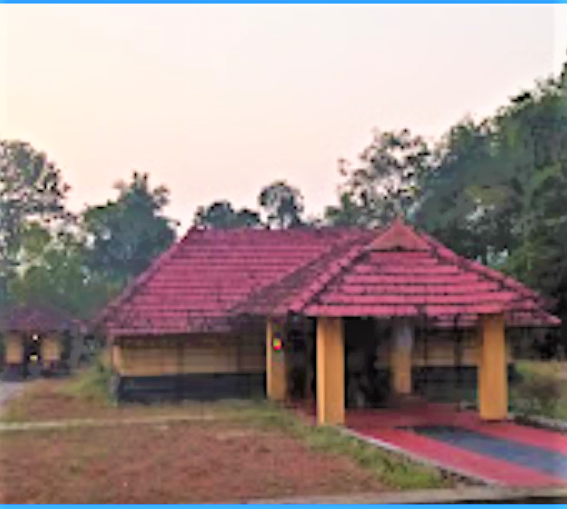
Kunnakkattu Mahadeva Temple, Pattambi, Kerala 679303 Details of the temple can be seen in my earlier Blog: Must Visit Kerala Temples III – Temples around Shoranur and Pattambi – Part 2 of 2
4.9 Anthimahakalan Kavu, Kulappully
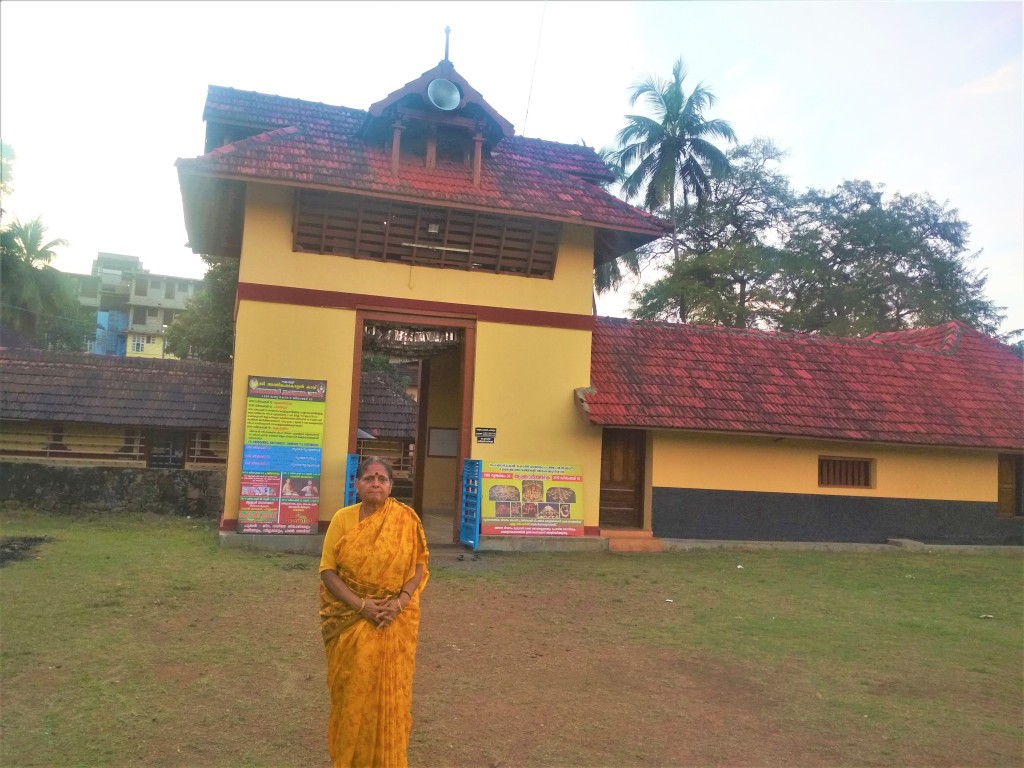
Anthimahakalan Kavu, Kulappully, Shoranur 2, SH 22, Kulappully, Kerala 679122 Details of the temple can be seen in my earlier Blog: Must Visit Kerala Temples III – Temples around Shoranur and Pattambi – Part 2 of 2
4.10 Shiva Kshetram, Temple Shoranur

Shiva Kshetram, Temple St, Mudaliyar Theruvu, Shoranur, Kerala 67912 Details of the temple can be seen in my earlier Blog: Must Visit Kerala Temples III – Temples around Shoranur and Pattambi – Part 2 of 2
4.11 Chuduvalathur Siva temple, Shornur
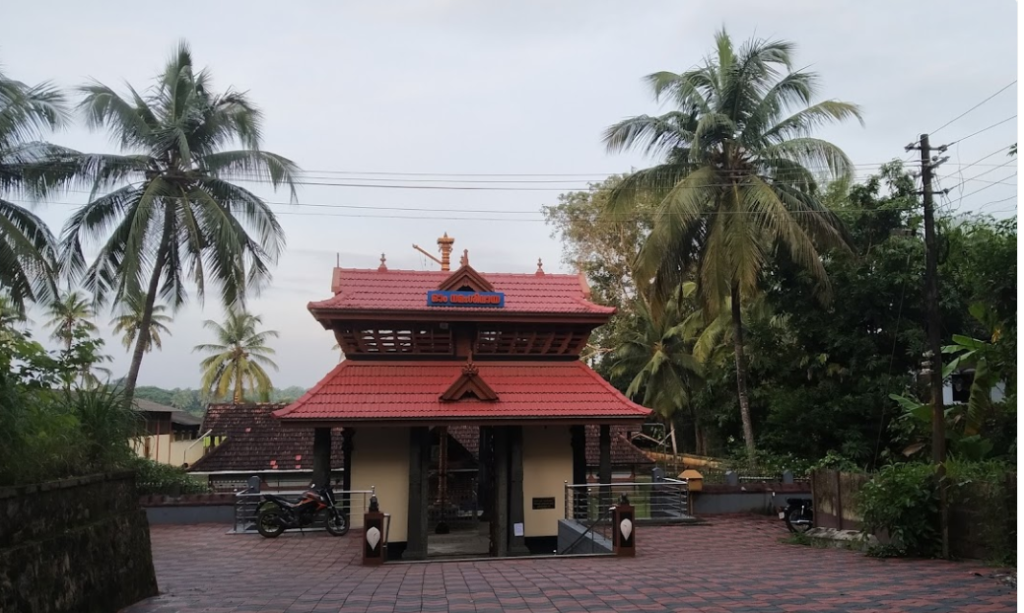
Chuduvalathur Siva temple, Shornur Perinthalmanna Highway, Chuduvalathur, Shoranur, Kerala 679121 Details of the temple can be seen in my earlier Blog: Must Visit Kerala Temples III – Temples around Shoranur and Pattambi – Part 2 of 2 To Return to Index of Contents, Click Here. Otherwise Continue
5 Other Bhagavathy Temples
5.1 Nenmara Sri Nellikulangara Bhagavathi Temple
Nenmara Sri Nellikulangara Bhagavathi Temple, Nenmara – Nelliyampathy Rd, Nenmara, Kerala 678508 Nenmara Sri Nellikulangara Bhagavathi Temple is located at Nenmara, Kerala at a distance of 34 kms from Palakkad. The presiding deity here is the Goddess known as Sri Nellikulangara Bhagavathi and it is one of the large number of B hagavathy temples of Kerala..
As per the Legend once a person named Kodakara Nair on his way to Nelliyampathi hills took rest under the shade of a tree. Goddess who was residing at that place attached herself to the umbrella carried by this person and he brought the bagavathi to nenmara. It is believed that when he tried to lift the umbrella form a place near Kothakulam pond he could not do it and people believed that a divine power had come to their village and a temple was built at the spot where the umbrella was kept and this place is called as Sri Moolasthanam.

Over the years astrologers and renowned religious people predicted that the temple should be shifted to Nellikulangara for the convenience of devotees of Nemmara and Vallenghi villages. Cochin Devasom Board built the present day temple now known as the Nellikulangara Kaavu or Sri Nellikulangara Bhagavathi temple. The arrival of Nenmara Vallangi Vela festival brings a spirit of celebration and rejoicing to the whole region.
This temple is famous for its Nenmara Vallangi Vela festival conducted jointly by two villages Nenmara and Vallangi which is only second to Thrissur Pooram. This festival is a friendly competition between two villages to conduct the festival with great pomp and show.
The Vela festival of Nenmara and Vallangi villages is famous for its grandeur and rituals. The friendly competition between the villages to outdo each other spices up the entire festival and many a unique sight are on display during this time. The Vela is celebrated after the paddy harvest. The festival is believed to be the birthday of the presiding deity of Nellikulangara Bhagavathy and falls on the 20th day of the Malayalam month of Meenam. The two competing villages, the Nenmara and the Vallangi, have their own temples but converge at the common Nellikulangara Bhagavathy Temple for the Vela.

One gets to witness some wonderful art forms like Kummatti, Karivela and Andivela during this time period. The 20th day sees magnificent processions with caparisoned elephants being taken out from the two villages to the Nellikulangara Temple. Once they reach the temple, the two sides perform the panchavadyam (traditional Kerala orchestra). Villagers from both sides stand facing each other beneath the utsavapandal (festival stage) and enthusiastically perform several traditional percussion ensembles in a bid to outshine each other. People are also enamoured by the beautifully decorated aanapandal which are used to house the elephants.
5.2 Mangottu Kavu Temple, Athipotta
Mangottu Kavu Temple, Athipotta, Kerala 678687 Mangottu Kavu Temple is located at Athipotta, near Alathur in Palakkad district, Kerala at a distance of 39 kms from Palakkad. This is one of the large number of Bhagavathy temples of Kerala. The goddess in this temple is supposed to be in her very fierce form. She is also considered as the younger sister of Parakkattu Bhagwathi who has a temple in Kavasseri near by. Mangottu Bhagavathy Temple enshrines Vaishnavi, one of the seven mother goddesses. The idol of the goddess is about six feet tall.

As per the legend, Mangottu Bhagawathi is supposed to have come to this place to fulfill the desire of a weaver. This weaver, Kuttan, was a great devotee of the Goddess. He and his people wove clothes and sold them in places where festivals were held. It is said that at one place, he was so enchanted by the appearance of the Devi there that he mentally requested her to come along with him. At that time, there was a whirl wind which removed the clothes of the idol of the Goddess which was being taken out in procession. Kuttan immediately threw the cloth that he had brought to sell on to the goddess. This cloth fell on the Goddess and got attached there.
Next day Kuttan returned to his village. He was carrying an Umbrella. At a particular point he got so tired that he kept the Umbrella on floor and slept near by. When he woke up, he was not able to remove the umbrella from the ground. An astrologer was summoned who told Kuttan that the Goddess has occupied the Umbrella and she wants to live in this place. Then the astrologer told that a temple should be built This place is the present Athipotha.
Tuesdays, Fridays and Sundays are considered special days to visit the temple. Apart from the powerful Bhagavathy, Ganapathy has a shrine in the South-West corner called Kanni Moola. Mookken Chathen as known as the Watch Lord of Bhagavathy, is consecrated on the Northern Side, out side the Temple compound. Special Poojas are done in the Sannidhi. These poojas are not done as per the Tantric Rituals; These are done under “Koulachara”. Poojas are done by the Hereditary Family.
The temple timings are 5am to 11 am and 5 pm to 8 pm. Prasada Ootu (Lunch prasadam) will be there on Tuesday, Friday and Saturday starting from around 11:30am
The Festivals of the temple are : 1. Vela: The main festival in the temple is Vela Celebrated in the month of April (Medam month in Malayalam Calendar year). This Festival is conducted by the people nearby Known as Desam.
2.Utsavam : This is a 10 day long Tantric Ritual performed in the temple for the enrichment of divinity of the deity This will be performed under the auspice of the Temple Tantri Bhramashree Andaladi Manakkal Sankaran Namboodirippad. The Utsavam is conducted During the Malayalam month of Edavam ( May-15 to June 15) every year. During Utsavam,, Chandattam is performed. On the 9th day, the deity will be taken out in procession to Gayathri River Banks for Aarattu. Bhagavathy will have Aarattu in the Kadvu (River ) and the deeparadhana will be performed there itself. Then Bhagavathy will be taken back in procession having decorated elephants, Panchavadhyam and with large number of Devotees, who would take bath in the river during the course of Aarattu and Deeparadhana.
3. Laksharchana : This is also a Tantric Ritual. This is conducted during the month of Kanni ( September-October) every year. Vedic scholars will recite Mantras all along the day, and the Kalasams will be poured over the Main Diety every day. This 7 day Ritual also attracts many devotees.
4. During Navarathri days, a special Pooja, Navarathri Vilakku is done at the temple.
Also Vishukkani, Illam Nira, Nira Puthari etc. are also celebrated in the temple
The temple is under the Malabar Devaswom Board. The Hereditary trusteeship belongs to Poomully Mana. The Temple has a limited lodging facility with 6 Rooms available for daily rent. Temple also has a Kalyana Mandapam. Landline Phone No. (04922) 232248 Office Mobile: 85908 05996
The temple has three sub temples situated at 3 different places.
1. Shri Mahadeva Temple, Vaulliapuram : 3 Kms away from the temple, on the banks of Gayathri River. Main Deities are Lord Shiva & Lord Vishnu.
2. Shri Subramaniaswamy Temple, Kazhani : 6 Kms away from the temple. This temple is abode of Lord Subramanian. This temple is very old, dating back to a 1000 years. The Sreekovil is built in “Salakooda” Nirmithy, an old architectural form used in Temple constructions in ancient days.
3. Shri Siva Temple, Venganniyur. : 12 Kms away from the temple. Siituated in a typical village called Venganniyur.
5.3 Sri Chinakathoor bhagavathi Temple, Palapura
Sri Chinakathoor bhagavathi Temple, Palapuram, Ottapalam, Kerala 679103 Sri Chinakathoor bhagavathi Temple is located at Palapuram, Ottapalam, Kerala at a distance of 6kms from Thruvilwamala and 30 kms from Palakkad. This is one of the large number of Bhagavathy temples of Kerala.
The temple is one of the oldest Devi temples situated in Palappuram in Ottapalam Taluk. There are two sancta sanctorum (sreekovil) in the temple which is endowed with the presence of goddess Bhadrakali, namely thazhathe kaavu (lower shrine) and mele kaavu (upper shrine). Mamankam. (Mahamagham/Jubily) used to be praised once in twelve years on Makam day.
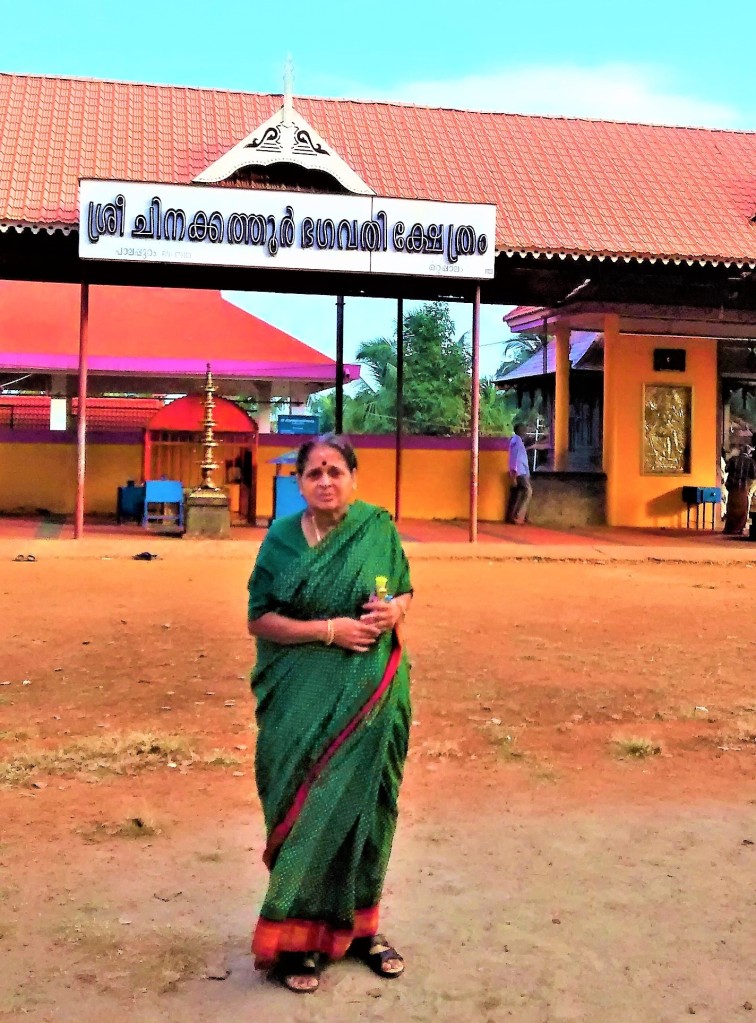
The temple has 2 shrines :Thazhekavu (lower shrine) and Melakavu (upper shrine). Melakavu is believed to be older than Thazekavu. The priests of the upper shrine traditionally come from the Kulangara nair family of Palappuram. Namboothiri priests do the pujas[what language is this?] in the lower shrine and in the ten days of Pooram. They are in charge of the upper shrine as well. There is a shrine dedicated to Lord Vigneshwara (Ganapati) who is believed to be in his divine “Vidya Ganapati” form, adjoining the temple complex near the iconic banyan tree
As per the legend Lord Rama and Lakshmana were wandering in search of Sita when they reached Vilwadri (the Vilwa Mountain). They told lord Ayyappa and Bhagavathy who were accompanying them to find a place to take rest. When they did not return even after a long time, Rama and Lakshmana went looking for them and found them taking rest at the top of the hill. The myth has it that an angry Rama playfully pushed lord Ayyappa down to the south and gave a beating to Bhagavathy. (The shrine of lord Ayyappa at Vilwadri temple is situated in a lower part from the rest of the structure now- like a pit and the deity is called kundile ayyappan or Ayyappa in the pit!).
Playfully beaten up by Rama, Bhagavathy ran away from there and stopped running when she reached Chinakkathoor, Palappuram and took position there, facing the north. The temple faces to the south today. There is a myth regarding this as well.
In the year of 1757, Samoothiri and his army were on their way to attack Paliathachan. When the king and his retinue reached Palappuram, he noticed that the palanquin bearers have stopped moving. When enquired about this, he was informed that there resided the most benevolent Bhagavathy who is sure to hear the prayers of the devotees. Samoothiri got down from the palanquin, walked to the north and thus asked: “who is it?”, and the Bhagavathy turned to south to face him and replied: “It is Kali.”
Samoothiri duly paid obeisance to Bhagavathy. Since his obstructions were removed, Samoothiri was ready to carry on with his journey. Before leaving the place, he ordered his men to celebrate the annual festival of the temple with all the pomp and glory. He entrusted the landlords to carry out the proceedings of the festival with 16 wooden horses. Kuthirakali – a ritual game of these wooden horses- is performed as part of the festival (pooram) even now.

Sree Chinakkathoor Bhagavathy Temple hosts one of the most unique and colourful poorams (temple festivals) in Kerala. This festival draws in people in large numbers annually. It is celebrated on Makam asterism in the Malayalam month of Kumbham. One is treated to some of the best folk art performances that Kerala has. Majestic elephants marching through the streets are among the best sights seen during this pooram. The accompanying panchavadyam and pandimelam (traditional orchestra) add to the grand spectacle. Pulikali performances are also seen along with the constant beat of drums reverberating through the air. People of all religions and castes come together to celebrate this great occasion every single year. The temple timings are : 5am to 10.30 am and 5 pm to 8 pm
5.4 Sree Puthanalkkal Bhagavathi Temple
Sree Puthanalkkal Bhagavathi Temple V8J9+JCP, Cherpulassery, Kerala 679503 Sree Puthanalkkal Bhagavathi Temple is located at Cherpulassery, Palakkad district of Kerala, at a distance of 25 kms from Thiruvilwamala and 43 kms from Palakkad. It is one of the large number of Bhagavathy Temples of Kerala.
As per the legend, Mozhikunnathu mana is the Ooranmah (Management) and closely related to the origin of the temple. A member of this Mana was a firm believer of Thiruman- dham Kunnilamma and used to visit that temple every monday for thinkal thozhal (special prayers for Monday) Due to old age , he could not continue visiting the temple and once left after regretful prayers.

On reaching his house, he left his palm leaf umbrella and went for a bath in nearby pond 0f Illikot Kurissi Siva temple. When he tried to lift the umbrella after bath, it began to shiver indicating the presence of some power. He understood that Devi was following him from the temple understanding his mental agony. From that day onwards the place was considered to have Devi’s presence ; he and his ancestors began to worship Devi at that place..In course of time, members of the Mana built the temple here. The Temple timings MORNING- 5 AM TO 10.30 AM EVENING- 5 PM TO 7.30.
5.5 Sree Pariyanampatta Bhagavathi Temple
Sree Pariyanampatta Bhagavathi Temple, Pariyanampetta, Kattukulam Road, P.O, Thiruvazhiyode, Kerala Sree Pariyanampatta Bhagavathi Temple is located at Pariyanampetta, Thiruvazhiyode, Kerala at a distance of 34 kms from Palakkad and 18 kms from Ottapalam. This is one of the largest Devi temples of Valluvanad Desam in Palghat district. Presiding diety is known as the Goddess of 14 Desams. Temple and its precincts have much resemblance to that of Mookambika temple Kollur.
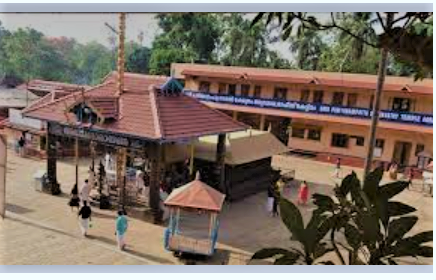
Sree Pariyanampatta Bhagavathy temple, dedicated to Bhagavathy is believed to be around 1400 years old, Here three Daaru Shilpas (idols) of Goddess Devi (full shape in standing pose ) are placed close to one another.The first Shilpa on the right is being worshiped as Saraswathi Devi in the morning,the middle deity as Bhadrakaali in the noon and the third Shilpa is being worshiped as Lakshmi Devi in the evening. The single deity of Sree Mookaambika Devi temple is being worshiped in the same manner and concept of three forms of the Goddess.
The temple is an exquisite structure spread over one acre out of the total eight acres. It has got a sreekovil with a mukha mandapam, dhwajam, deepasthambam, sub-shrine, pattukottil, thidapalli, ootupura and agrasala along with other structures. There are some delicate and intricate wood carvings at the mukha mandapam (ashta dikpalakas with Sree Chakra at the centre) and on the Sree Mukham (motif of Goddess Bhadrakali and heads of elephants on either side) as well.
As per legend, once a veteran namboothiri of Pariyaanampetta manakkal had undertaken a pilgrimage to Mookaambika temple with his servant who was the head of Chalavara Parola Nair Tharwad near Cheruplassery. He attained divinal powers on meditating devi Mookambika for a long period. There after he was returning home wishing to spend his rest of life in the home village chanting Devi bhajans . On reaching the bank of a small stream at Pariyanampetta he felt tired and took rest there and untied his bundle of personal belongings.
To his dismay he saw a Thidambu (replica of a deity) inside the stocks of his bundle . His inner eye resolved the reason and he desired to make pratishta (installation) of the thidambu there. He summoned peoples of 14 desoms in old Valluvanadu taluk and did the pratishta of the thidambu with the vedic rituals .
Main festival of Temple is known as Pariyanampetta Pooram. It is one of the famous festival of the district. . Usually this festival falls on 7th day of Malayalam month Kumbham and from that day onwards it lasts with traditional programs, stage programs, cultural programs, stage shows, vocal concerts, percussions and dance programs on all days till date of main festival.
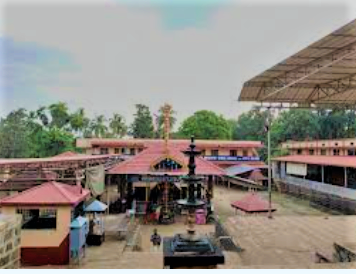
The ornamentally decorated up elephants up to 9 numbers take part in all three processions namely Vadakkanpooram, Kizhakkanpooram and Patinjaranpooram. Well known percussionists and other associated artists ensemble the rhythm with their talent. Effigies of big size Kuthira (Horses), Kaala (Bulls) and chariots which are decorated with colourful imitating laces set with stones are incorporated to add the procession pomp and splendour.
After the processions are finished in the temple , fire works start by 9 PM with its sound and color enthralling thousands of viewers. Since then percussion, staging drama in dancing form ( Bale), traditional items like Keli, Pattu etc, and night procession with parading decorated elephants add the festive mood of the Pooram which would conclude by the next day morning.
During pooram days Nadaswara melam and tholpavakoothu are performed in the temple. Tholpavakoothu is a traditional art form of Kerala which is a compulsory item to perform in all Devi temples during festival period. Ramayana story is narrated in this art form in which characters of the epic are made out of leather and their shadows are shown playing in a lengthy white screen according to the narration. This is in remembrance to how the story of Ramayana was told to Devi Parvathy by lord Paramasiva.
One of the most expensive and eminent vazhipadu (votive) is” Dravyakalasam”. It is also performed as part of the festival in order to rejuvenate the divinely power of the deity. Gold pellets, coins, precious stones like diamonds, blue saphire, Pushyaraagam ,ruby etc mixed with nine cereals are poured on the deity enchanting veda slogans. Participation of devotees in contributing the valuables for “Dravyakalasam” bring their home all fame and prosperity .
Para Eduppu is one another important vazhipadu (votive) during the temple festival. On offering this vazhipadu one can have the grace of lord Dhanalakshmi to fulfil their prayer of being wealthy. To Return to Index of Contents, Click Here. Otherwise Continue
5.6 Ootukulangara Bhagavathy Temple, Peruvemba
Ootukulangara Bhagavathy Temple, Peruvemba, PM4R+JMH, Kerala 678531 Ootukulangara Bhagavathy Temple is located at Peruvemba, , Kerala at a distance of 15 kms from Palakkad.
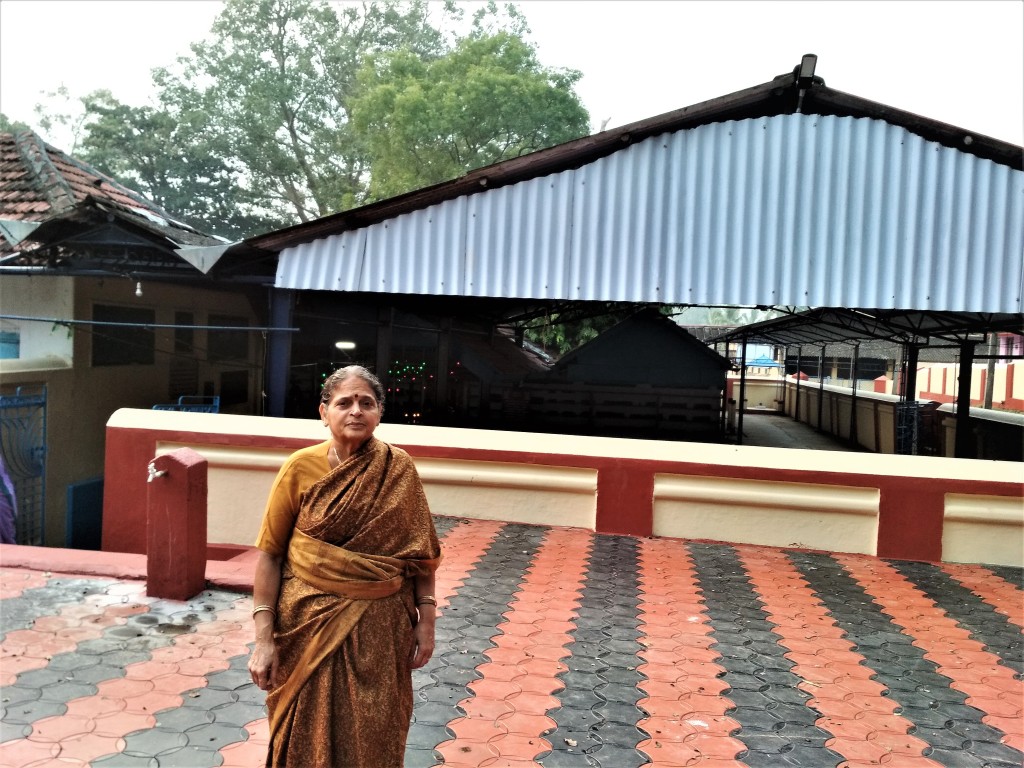
As per legend, the land where Peruvemba temple now exists was originally a farmland. When working on the land, a farm worker noticed that the plough accidentally hit a stone and the stone started to bleed. The worker was scared at this sight and he immediately fled from the scene to intimate the land owner. The land owner inspected the scene and called for an astrologer who performed a Devaprasnam and found that it was Bhadrakali in Swayambhu form (self-incarnated in the stone) and as per the astrological prediction, a small temple without a roof was built. Since the stone was found under the shade of an Ashoka tree, the tree itself was chosen to act as the roof to the temple. This is how the Ootukulangara Temple came into existence.
At the Peruvemba temple, Bhagavati is worshipped in Bhadrakali form. Often, the name Bhadrakali is misinterpreted as being one of the fiercest forms of the Devi. However, this is not true. Bhadrakali literally means, “That Kali who safeguards Her Devotees” and as per Agrala Stotram created by Markandeya, Bhadrakali bestows Happiness and Peace upon her devotees.
The most important service performed at the temple is the Chaandu abhishegam to the Bhagavati Devi. “Pattham Pathayam” is a festival celebrated in the last week of December every year. During that time, there is a day when everyone is allowed to freely enter the inner portals of the temple and reach very near the goddess. The temple has its ownAal maram and temple pond. The dewaswom building is now newly built alongside the kalyana mandapam.
Patham Padhiyam popularly known as Chanthatam is the major temple festival. It normally falls in the last week of December. The festival begins from the Malayalam month of Vrischikam or Mandalamasam. Vilakku (lighting of lamps in the temple and special pooja) is daily performed from the first day of Vrischikam masam to chanthatam festival. The chanthatam is celebrated after 41 Niravilaku in the first following Monday or Thursday. Devotees offer auspicious offering of the Bagavathy ‘chanthatam’ to the Bagavathy at the festival day. The temple is open till 1 PM from the morning at the Chanthatam day.
Navaratri festival is also auspicious in the temple. Vilakku is daily performed in the nine days of navarathri. Peruvemba Vela is another festival of the Ootukulangara Bagavathy. It is not performed in the temple; it is performed in the Thoovaseri Mannam, which is the moolasdanam of the Bagavathy. Temple timings are from 5 AM to 10.30 AM and 5 PM to 7 PM.
5.7 Sree Emoor Bhagavathy Temple, Palakkad
Sree Emoor Bhagavathy Temple, Kallekkulangara, Akathethara, Sagarika Nagar, Palakkad, Kerala 678009 (Kallekulangara Hemambika Temple) Sree Emoor Bhagavathy Temple is located at Kallekkulangara, Akathethara, Palakkad district , Kerala at a distance of 5 kms from Palakkad.Emoor Bhagavathy Temple also known as Hemambika Temple (or) the Kaipathi (i.e. palm of the hand in Malayalam) Ambalam (or) Kallekulangara Bhagavathy Temple – {Kshetram/Ambalam are Malayalam words meaning temple}.

As per legend, four Ambika Temples Goddess Balambika at Cape-Comerin Goddess Lokambika at Loakanarkavu near Badagara, Goddess Mookambika at Mangalore and Goddess Hemambika at Palakkad were consecrated by Parashurama for the safety of Kerala, the Land of recovered from the Sea.
The chief deity here is Goddess Hemambika, but the idol worshipped here is an “upraised hand,” behind which there is a legendary tale. The Goddess once agreed to appear before a devotee on the condition he will not disclose it to anyone. But the excited devotee, unable to hold it within himself, told everyone, and when the goddess appeared before him, seeing the small crowd that had gathered there, she vanished immediately, and all that the devotees could see were her upraised hand!
About 15 KM away from the present Malampuzha reservoir, in the inaccessible valley of the dense Vadamala forest, a section of the Western Ghats(Paschima Ghatta), locally known as Muthikulam, Mudiyolambi, Aduppukootty, Poonkavanam etc., there was a divine shrine of Goddess Durga. The legend says that Kurur and Kaimukku Nampoothiris used to visit this holey place daily for worship, crossing the protected tempestuous mountains tracks on naked feet. Years passed on without any change in their daily routine. One day while returning home after worship, due to the vagaries of old age, they were forced to take rest under a tree. An old woman appeared before them and gave them some sweet fruits which they gladly accepted.
They were suddenly relived of their fatigue and felt surprisingly refreshed. These two ardent devotees on their journey next day, reached near the tree to find a huge elephant standing before them. Beside the elephant they had the ‘Darshan’ of the golden coloured Goddess. From that day onwards, they started worshipping the Goddess under the tree. Kurur was incapacitated by old age and found it difficult to carry out the daily routine of worship in the mountain.

One night, Goddess papered before him in his dream and consoled him that she will be seen in the pond near his house and can worship her there. Early next morning the radiant devotees rushed towards the pond and found two beautiful hands coming out of water in the middle of the lake. Kurur, on his excitement, jumped into the pond, swam to the centre and caught of hold of the hands. Immediately, the hands turned into stone, becomes stationary. The Kallekulangara, where the temple is situated, derives its name from this incident. With the help of the friend Kaimukku Kuru worshipped the hands. The present temple was constructed by filling the lake around those divine hands. The Five Ponds surrounding the temple amply prove that the temple was constructed on the land reclaimed from the lake. Kurur instructed the local ruler, Shekhari Verma Valiya Raja of Palakkad for commencing the work of constructing the temple. To-day, the Executive Officer, appointed by the Malabar Devaswom Board looks after the day to-day administration of the temple.
It was Aadi Shankara who brought an order in the mode of daily worship and decided upon the different offerings to the deity. The Goddess is worshipped as Saraswathy in the Morning, as Lakshmi at Noon and as Durga in Evening. The very old Shiva Temple of Chendamangalam and the Shiva and Shastha Temple of Easwaramangalam are in the vicinity of Hemambika Temple which have greatly contributed to the sanctity of place.
Besides the major festivals of Dassara, Shivarathri, Mandala Pooja, Easwaraseva etc., and many holy days are systematically celebrated here. Important offerings to the Goddess are Naivilakku (Ghee Lamp), Kalabham (Sandal Paste), Chathussatham, Naipayasam etc., Hemambika Sanskrit High School, an educational institution of prominence is being run under the guidance of the Devaswom, mainly with a view of propagating and improving the study of sacred language (Deva Bhasha) Sanskrit. One famous Elephant named “Rajagopalan” owned by Kallekulangara Devaswom.
Important offerings to the goddess are naivilakku (ghee lamp), kalabham (sandal paste), naipayasam.
5.8 Puthur Sri Thirupuraikkal Bhagavathy Temple
Puthur Sri Thirupuraikkal Bhagavathy Temple,Puthur Rd, Venkateshapuram Colony, Puthur, Palakkad, Kerala 678001 Puthur Sri Thirupuraikkal Bhagavathy Temple is located at Puthur at a distance of 1 km from Palakkad, Kerala
Puthur shri thirpuraikal temple is one of the ancient and powerful temples of shakthi in the whole of Malabar. Bhadrakali is the main deity worshipped here. Along with her, the sanctum sanctorum also has the divine presence of Lord Vishnu,Durga and Lord Ganesha.

It is believed that the devi fulfills all the wishes of her true devotees. A heartfelt prayer never goes unanswered here. Many true life stories of her divine blessings from times of yore are a proof to it.With every passing year the story of her benevolence crossed the boundries of the of the dist. of palakkad further and further and today people from far and near throng the shrine for a glimpse of her divinity.
The main festival of this temple called the Puthur Vela commences in mid March and the curtain falls on the month long celebrations in mid April. The most interesting and artistic element in Puthur Vela is the Tholpavakoothu (shadow puppetry) performance. Tholpavakoothu or shadow puppetry is a temple art form which is popular in the Bhagavathy temples mainly in Palakkad district and nearby regions in Kerala. It is a form of puppet show wherein the story of Ramayana is depicted .The belief goes that devi enjoys the divine story of Lord Rama every year through this form of recital.Very few temples of kerala still retain this art form.
Apart from this all other temple art forms of kerala feature during the celebrations. The highlight of this month long festivity is the Music and Dance festival that has grown into one of the prestigious cultural events of the state. Also 10-day dance and music festival, known as Puthur Sree Thirupuraikal Music and Dance Festival is conducted.. Every year renowned dancers and musicians from across the country will perform here.
It is considered it to be one of the ancient and most powerful temples of Shakthi in the entire Malabar. The temple is dedicated to Bhadrakali, who is the main deity worshipped here.
5.9 Sree Kurumba Bagavathi Temple, Vadakkanthara
Sree Kurumba Bagavathi Temple, Chunnambuthara, Vadakkanthara, Palakkad, Kerala 678003, Sree Kurumba Bagavathi Temple is located at Vadakkanthara, Palakkad, Kerala .There are several Kurumba Bhagavathy temples in Kerala. Some of them at : Kodungalur, Pudussery, Muzhappilangad, Palappuram, Kozhikode, Kuthanur, Thozhupadam, Kottikulam Bekal, Chathakkad, Kuzhalmannam, Kuriyadi, Swamikunnu and Vadakkanthara. There is another Bhagavathy Temple in Vadakkanthara at a distance of 1.5kms from Kurumba Bagavathy Temple: Vadakanthara Sree Thirupuraikkal Bhagavathi Temple.

Sree Kurumba Bhagavathy temple is very ancient and famous in Kerala. Its tradition and festivals attract more number of devotees daily.
5.10 Bhagavathy Temple, Manapullikavu
Bhagavathy Temple, Manapullikavu, East Yakara, Manapullikavu, Palakkad, Kerala 678013 Bhagavathy Temple, Manapullikavu is located at Yakkara, Manapullikavu, Palakkad district, Kerala at a distance of 5 kms from Palakkad.

As Guruvayur and Sabarimala are noted for sandal and gheeabishek respectively, Manapulli Bhagavathi temple is noted forblack paste – Karuppu Chandu) abishek. Mother Bhagavathihas three eyes and four sharp long teeth – Korai Pal in Tamil.
It is believed that the sword used by Mother Bhagavathi to defeat and destroy the demons is still the float tank –Teppakulam. During the Velai festival, an event of Mother Bhagavathi taking out the sword from the Teppakulam – called Velichapadu – is celebrated. A devotee possessed with the influence of Mother Bhagavathi dives into the tank, bring the sword and place it in the shrine of Mother for pujas. Feeding of the devotees also takes place on this day called Velai Oottu. During this festival, 15 elephants stand in a line with playing of Pancha Vadyam, Pandi and Panjari Melas. Mother Manapulli Bhavathi with Her dark complexion is facing North. She is holding trident, skull, sword and armour in Her four hands. She is in her best attire wearing jewels. She has the third eye onthe forehead as Lord Shiva and four sharp long teeth. Thosesubjected to injustice pray to Her for relief. It is said that Her long teeth represent four Vedas.
As per the legend, Numerous Bhrahmin families living on the banks of Holi River Sokanasini (Bharathapuzha) used to perform ‘Yagas’ on the river bed. Thus the area came to be known as ‘Yaga-kara’ which later came to be known as ‘Yakkara’. It is believed that a saintly Brahmin of Yagakkara conducted his prayers in his kitchen which is also called as ‘madappalli’. In the course of time and usage, the area came to be known as “Manappulli”.

Sree Manappulli Bhagavathi is Bhadrakaali and was born out of the sacred “Jada” of Lord Shiva during Dakshayaga. She is black in colour, with four hands, each one having Soolam, Kapalam, Gadkam and Khedam. She is with three eyes, two ‘Dhamshtram’, with ‘Pattudayada’ and valuable ornaments. The Prathishta is in ‘Shanta Bhava’. During ‘Chandattam’ ceremony She turns to ‘Rudra Bhava’ and becomes ‘Shanta Swaroopini ‘after accepting the ‘Kadummadura Payasa Nivedyam’. She is believed to satisfy the desires, hopes and aspirations of her true devotees and also protect them from all evils. The temple itimings are : 5.30 a.m. to 11.30 a.m. and from 5.00p.m. to 8.00 p.m. To Return to Index of Contents, Click Here. Otherwise Continue
5.11 Vadakanthara Sree Thirupuraikkal Bhagavathi Temple
Vadakanthara Sree Thirupuraikkal Bhagavathi Temple, Vadakkanthara, Palakkad, Kerala 678012 Vadakanthara Sree Thirupuraikkal Bhagavathi Temple, Vadakkanthara, Palakkad district , Kerala at a distance of 2 kms from Palakkad. It is one among the best temples of Goddess Durga, the presiding deity of Sri Thirupuraikkal Temple.
Devotees believe that this goddess is Kannaki (Kannagi) who came to Palakkad after burning Madurai. Her people called Moothans, a merchant community combining Tamil and Malayalam culture, accompanied her and settled at Nadupathi Mannam.

As per legend, Kannagi’s husband, Kovalan was wrongly accused of being a thief. The Madurai King ordered to execute Kovalan without a proper trial. After the death of Kovalan, a furious Kannagi burnt down the entire town. Kannagi left Madurai and came to Kerala along with her companions Kannadath and Kannangottu Pullottayyan. Kannagi gave darshan to King Shekharivarma and he built “Nadappathimannam Kshethram” for Kannahi.
It is Kerala’s only Karnaki Temple where the goddess Karnaki is worshipped in her full idolic form. One of the main attractions of this temple is the way the traditional pooja rituals are performed in Kannaki’s temple and in the Visalakshi Sametha Shiva Temple (Siva-Parvathy Temple) in the same compound. For Kannaki, the Kerala form of pooja practices are performed by the Nambudiri; while in the Shiva Temple, Tamil Shaiva form of Pooja practices are performed by Tamil Brahmin priests.
Unlike other Tamil speaking caste groups already present or having descended from neighbouring states, Moothan people have accepted both cultures alike. Even though there are having lineages from Tamil Nadu, They mainly speak Malayalam. The temple has emerged as one of the spacious and beautiful temples of Palakkad, displaying a mix of Tamil and Malayalam architecture.
The temple’s main festival is Valiya Aarattu, celebrated by the community for three days in the month of Malayalam calendar. The temple timings are : 04:30 AMto 11:30 AM and from 4:30 PM to 8 PM
5.12 Kadapparambathu Kavu Bhagavathy Temple,Ongallur -II
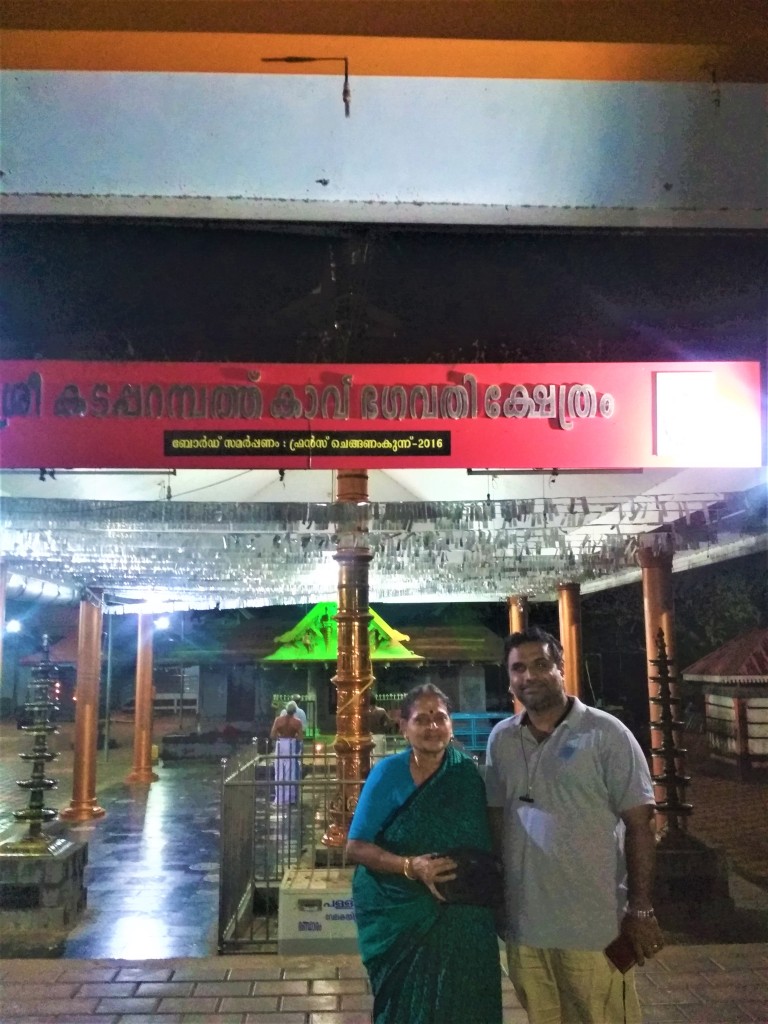
Sree Kadapparambathu Kavu Bhagavathy Temple, Shoranur-perithalmanna, Ongallur -II, Kerala 679313 Details of the temple are given in my earlier Blog: Must Visit Kerala Temples III – Temples around Shoranur and Pattambi – Part 2 of 2
5.13 Sree Mulayankavu Bhagavathy Temple

Sree Mulayankavu Bhagavathy Temple, Mulayankavu, Kulukkallur, Palakkad, Kerala 67930 Ph 9447997779, 9947728335 Details of the temple are given in my earlier Blog: Must Visit Kerala Temples III – Temples around Shoranur and Pattambi – Part 2 of 2
5.14 Kodikkunnu Bhagavathy Temple
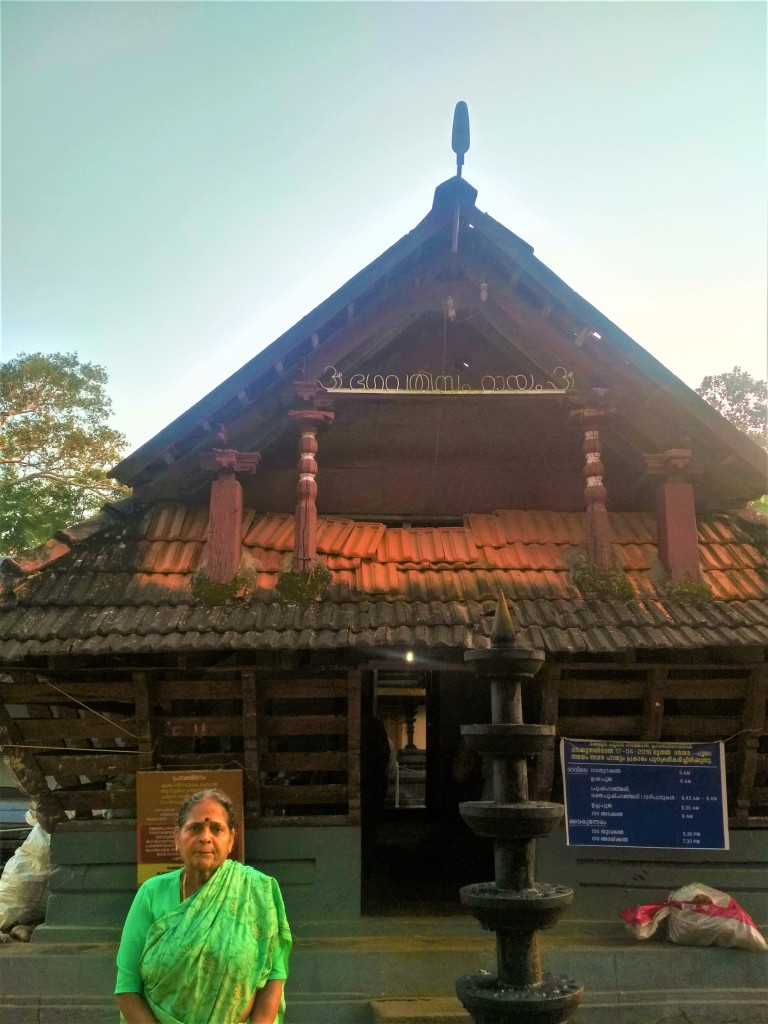
Kodikkunnu Bhagavathy Temple,Thiruvegapura Pallippuram Rd, Kodikkunnu, Parudur, Kerala 679305 Details of the temple are given in my earlier Blog: Must Visit Kerala Temples III – Temples around Shoranur and Pattambi – Part 2 of 2
5.15 Muthassiar Kaavu, Kodumunda

Sree Nedunganad Muthassiyarkkavu, Kodumunda, R5F5+4FC, Kodumunda, Kerala 679303 Details of the temple are given in my earlier Blog: Must Visit Kerala Temples III – Temples around Shoranur and Pattambi – Part 2 of 2 To Return to Index of Contents, Click Here. Otherwise Continue
6 Mahavishnu Temples
6.1 Kachamkurissi Temple, Payyallur
Kachamkurissi Temple, Payyallur, HMQM+VGW, Payyallur, Kollengode, Kerala 678506 Kachamkurissi Maha Vishnu Temple located at Payyallur Kollengode, Kerala at a distance of 28 kms from Palakkad.
The Deity of Thiru-Kachamkurissi, venerated as ‘Perumal’, is Chaturbahu Mahavishnu, holding Sankhu, Chakra, Gada and Padma. He is seen, seated on the coils of Ananta, in ‘Chakravarthy’ posture – akin to Sri Rama at his Pattabhishekham. Thus, devotees are known to have approached him over the centuries, both as Lord Narayana and as Sri Rama.

The idol is ‘Daaru Vigraham’ – of sacred wood (though wooden idols exist in the temples of Kerala, they are rare, the majority of images being of stone and metal). On the same pedestal as the deity, visible to the viewer only through reflective mirrors, are the images of Sridevi and Bhoodevi – consorts of Vishnu. All around are carved the Devas and Rishis – spectators and attendants at the ‘heavenly audience’. There is also a smaller deity within the sanctorum, which is the ‘Abhishekha Murthy’, as well as a Panchaloha ‘Utsava Murthy’ which is taken out in procession thrice a day during the ‘Seeveli’.
The Mantra of the Deity, as passed down the ages, is ‘Om Namo Narayanaya’. It is also common to hear devotees chant ‘Hare Rama’, since the outer wall of the Sreekovil is encircled by frescoes of the Ramayana.The signature ‘sthuthi’ of this temple is the ‘Thiru Kachamkurissi Suprabatham’, that has been composed by Shri MRR Varier and rendered to music by Carnatic vocalist Shri P. Unnikrishnan.
As per the legend, attracted by the serenity and breath-taking beauty of the hills and forests of these high ranges, Sage Kashyapa chose to meditate here, at the hill of Govindamala. Kashyapa was an ardent devotee of Vishnu, and as a result of his penance, the Lord is said to have appeared before him. Kashyapa’s desire was that Narayana would remain with him always, in the calm and idyllic surroundings of this land – and legend has it that the Lord chose to do so. The idol of Mahavishnu, as it appears within the temple, is said to have been consecrated by Sage Kashyapa himself.
Through association with Kashyapa, did this temple come to be known as ‘Kachamkurissi’, as derived from ‘Kashyapan-Kurissi’ – ‘the Hill of Kashyapa’. To this day, the faithful revere the Sage’s invisible presence by praying at the ‘Elanji Thara’, prior to entering the temple.

Up the steep and precipitous hillock of Govindamala, where Kashyapa sat in penance, the faint imprint of footprints, indented with a Sanku (Holy Conch) is believed to be the site where the Sage was granted his Vision. Nearby, a mountain spring magically bubbles up with force and vigour when the flocks of devotees performing the ardous annual pilgrimage every January stand before it and fervently shout ‘Govinda!’
Upadevathas are Ganapathy, Naga, Subramanya, Dharma Sastha, Siva, Sarpa Kavu. Gingelly Oil Prasada is reported to cure ailments.Temple timings are 5am to 10.30 am and 5 pm to 7.30pm
6.2 Sree Vellilapetty Vishnu Kshetram , pattambi

Sree Vellilapetty Vishnu Kshetram , pattambi, Kizhayur Rd, Pattambi, Kerala 679303 Details of the temple are given in my earlier Blog: Must Visit Kerala Temples III – Temples around Shoranur and Pattambi – Part 2 of 2
6.3 Thondiyannur Unnikrishna Temple, Maruthur, Pattambi
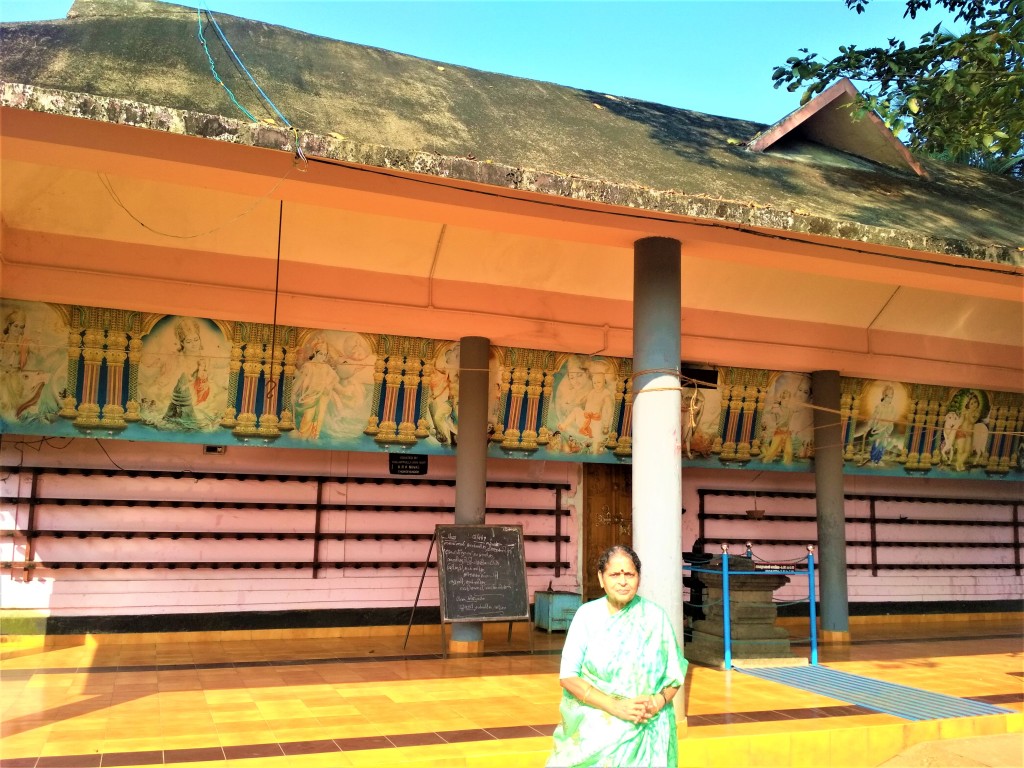
Thondiyannur Unnikrishna Temple, Maruthur, Pattambi, Palakkad, Pattambi – Cherpulassery Rd, Kerala 679336 Details of the temple are given in my earlier Blog: Must Visit Kerala Temples III – Temples around Shoranur and Pattambi – Part 2 of 2
6.4 Narasimha moorthy Temple, Paruthipra Ongallur -II

Narasimha moorthy Temple, Paruthipra Shoranur Road, Ongallur -II, Kerala 679121 Details of the temple are given in my earlier Blog: Must Visit Kerala Temples III – Temples around Shoranur and Pattambi – Part 2 of 2
6.5 Kulappully SreeKrishna Temple
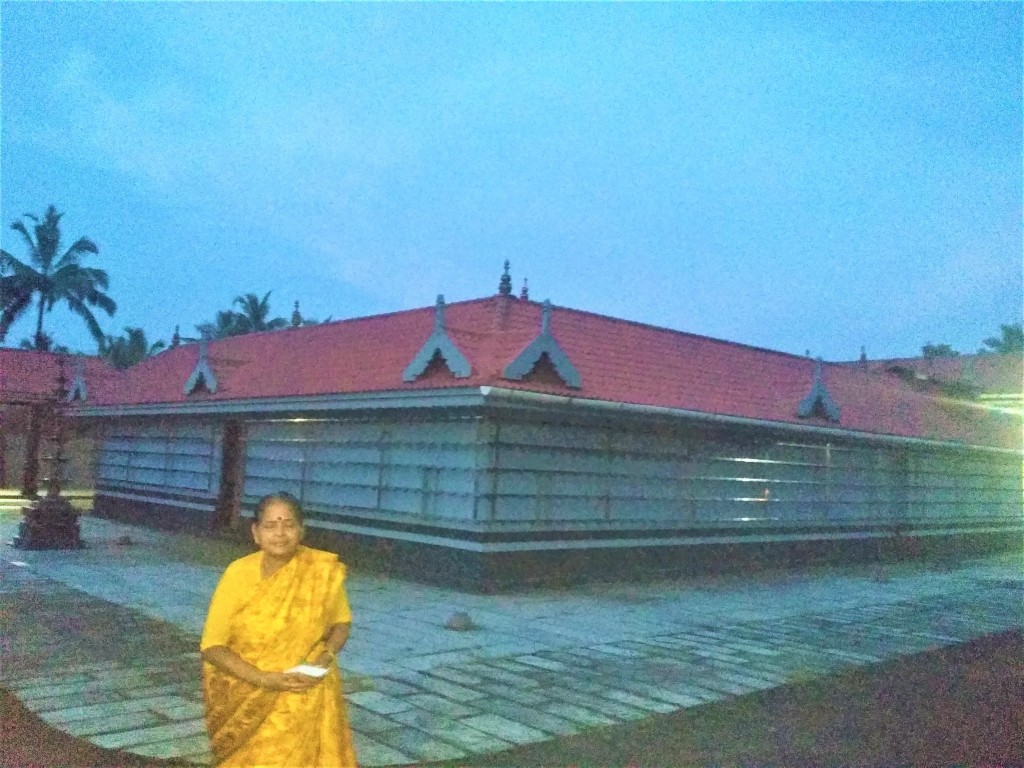
Kulappully SreeKrishna Temple, Sree Krishna Nagar Kanayam Road Kulapully – Po Palakkad-Dist, Kulappully, Kerala 679122 Details of the temple are given in my earlier Blog: Must Visit Kerala Temples III – Temples around Shoranur and Pattambi – Part 2 of 2
6.6 Skantha vishnu Temple, Nedungottur
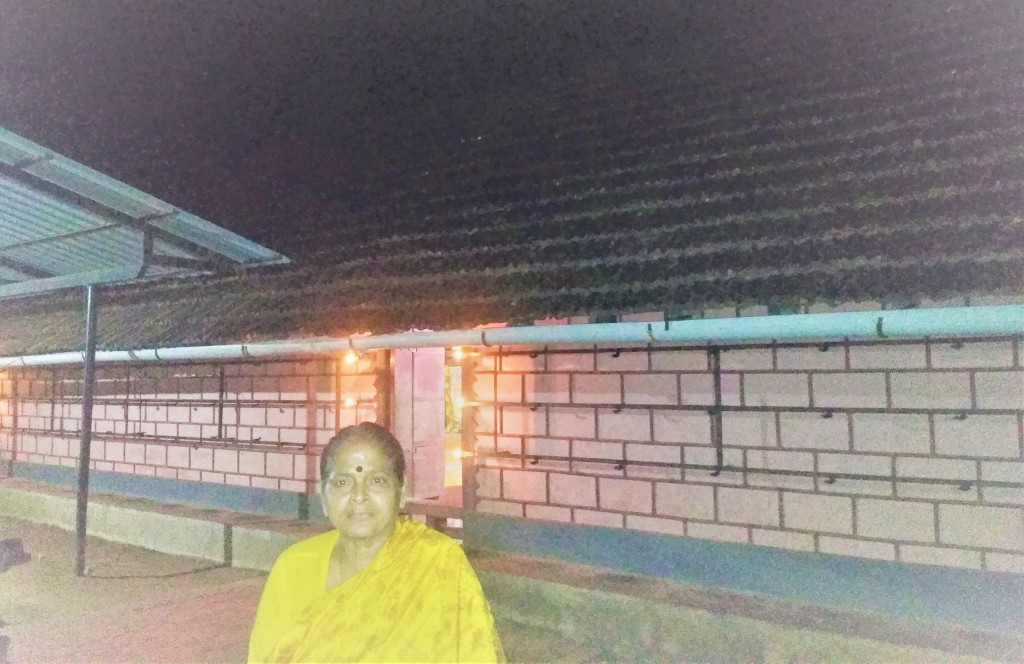
Skantha vishnu Temple, Nedungottur, Post Office Rd, Nedungottur, Shoranur, Kerala 67912 Details of the temple are given in my earlier Blog: Must Visit Kerala Temples III – Temples around Shoranur and Pattambi – Part 2 of 2 To Return to Index of Contents, Click Here. Otherwise Continue
7 Other Temples
7.1 Ongallur Ganapathy Temple

Ongallur Ganapathy Temple, SH22, Ongallur, Kerala 679313 Details of the temple are given in my earlier Blog: Must Visit Kerala Temples III – Temples around Shoranur and Pattambi – Part 2 of 2
7.2 Lord Subramanya Temple, Kazhani
Lord Subramanya Temple, Kazhani, Kavasseri-II, Kazhani, Kerala 678543 The holy ancient Lord Subramanya Temple located in the calm and beautiful atmosphere of Kazhani in Kavassery Panchayat in Alathur taluk of Palakkad district at a distance of 34 kms from Palakkad.. It is one of the sub temples of Mangotukavu Bhagavathy Temple.
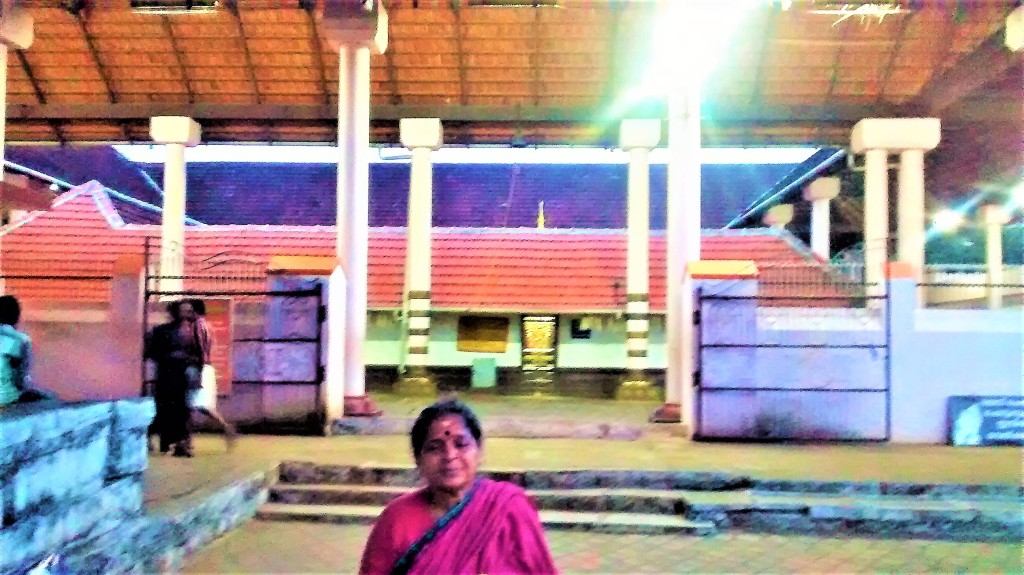
Built by Perumthachan and is about 1,200 years old, the temple upa devatas are Ganpati, Shasta and Nagar in addition to Bala Subrahmanya Swamy. The Thaipooyam Mahotsavam in the month of Makara is conducted extensively by the Temple Committee and the Mangotukavu Devasvam. Apart from this, shashti, mandalam maasacharana and navratri are the main features.
Devotees come here to pray for early marriage and for getting children – after observing Shashti vratham. Abhishegams are conducted with Milk, Panchamritham and vibhuti. To Return to Index of Contents, Click Here.
Continued in Part 4 of 5


ഇതിലെ മലയാള ഭാഷ യിലെ അക്ഷരത്തെറ്റുകൾ പരിഹരിക്കൂ….. ക്ഷേത്രങ്ങളുടെ പൂർണ്ണ മായ അഡ്രസ് ഉണ്ടെങ്കിൽ നന്നായിരുന്നു.🙏
LikeLike